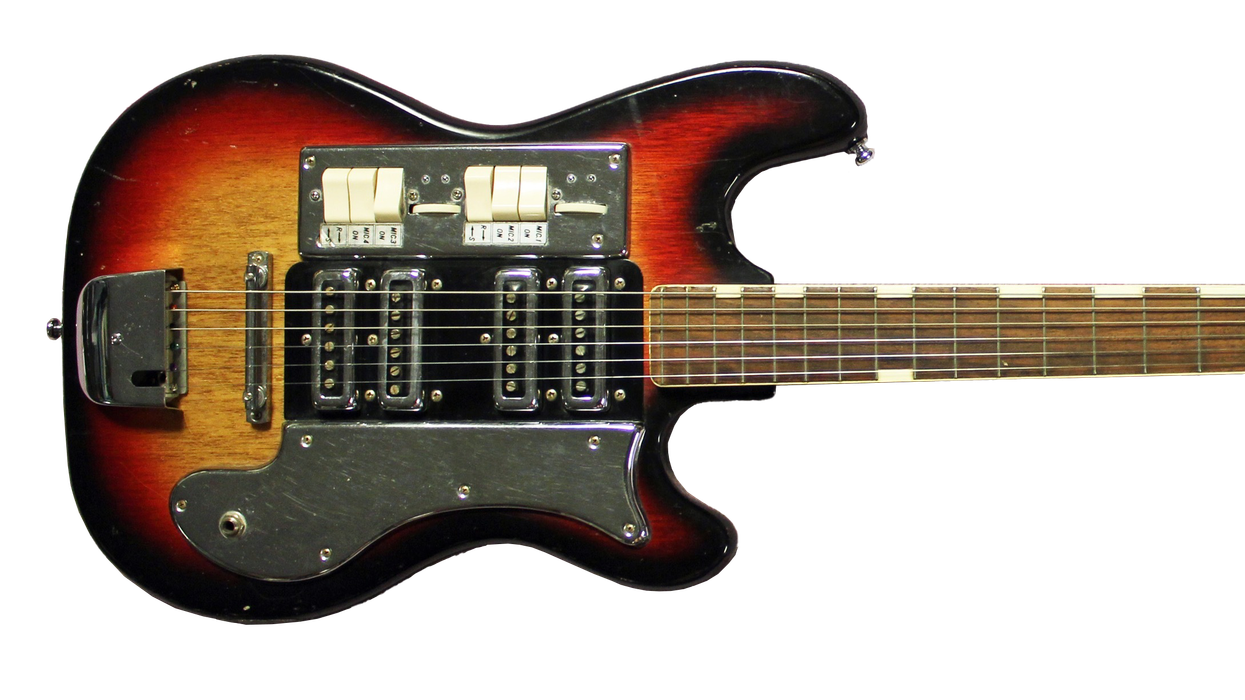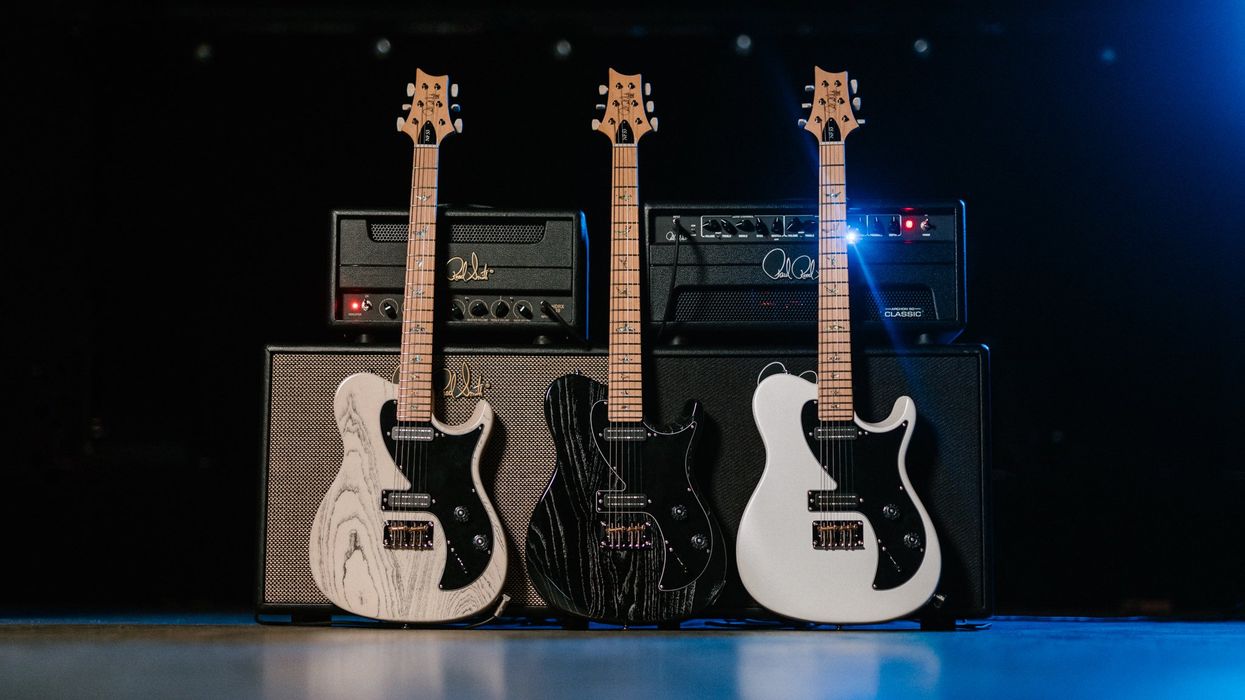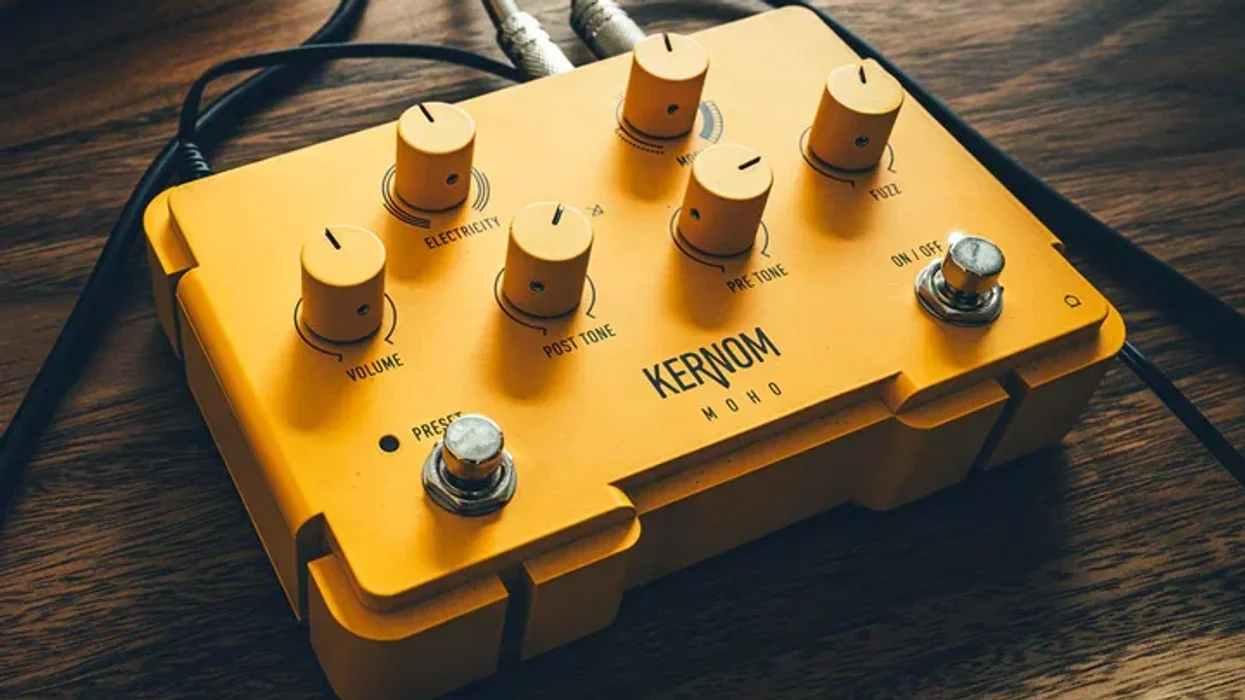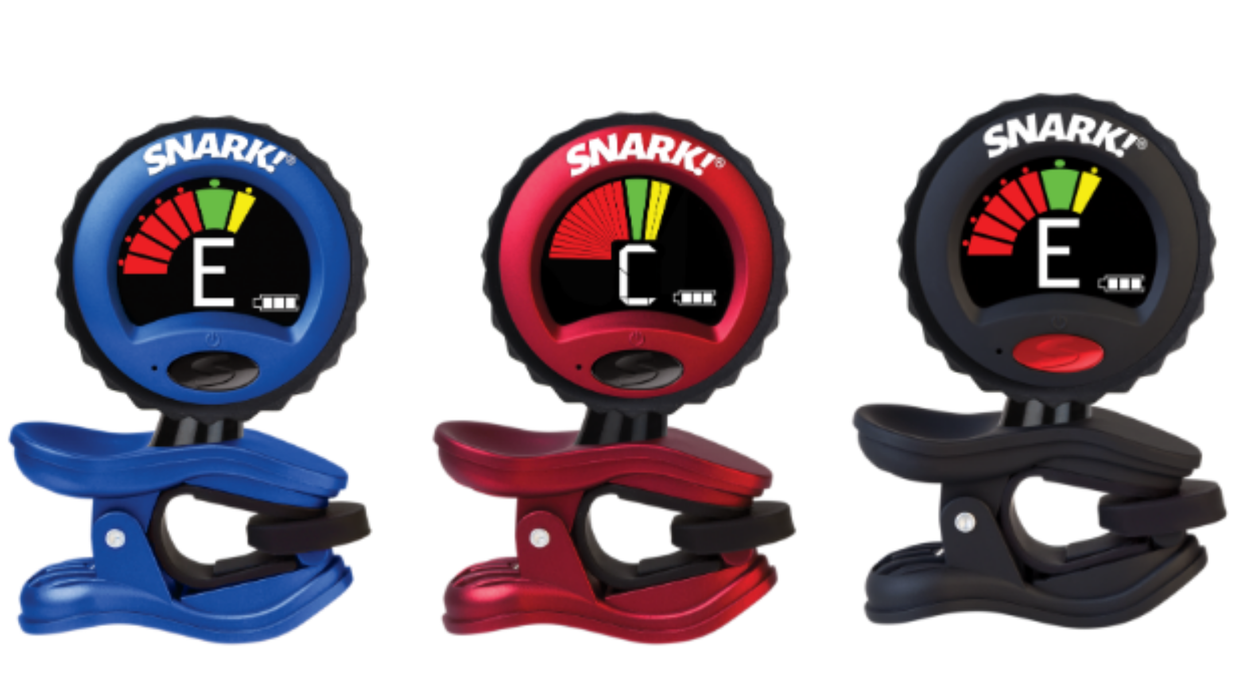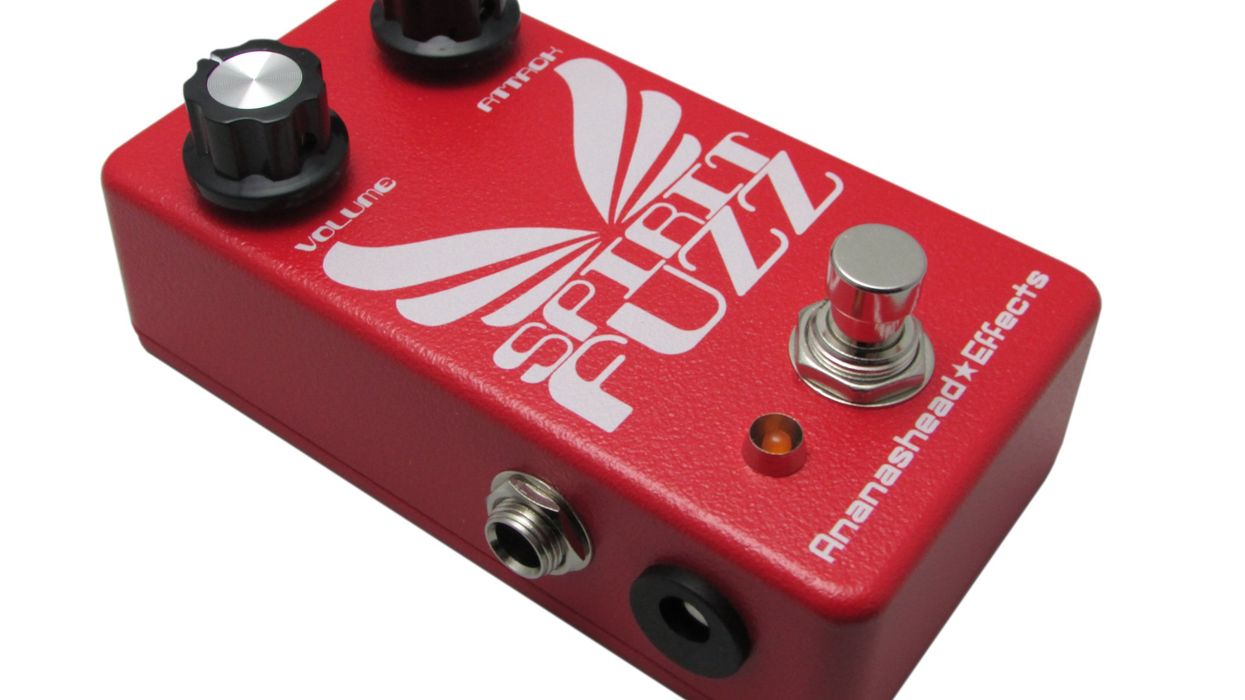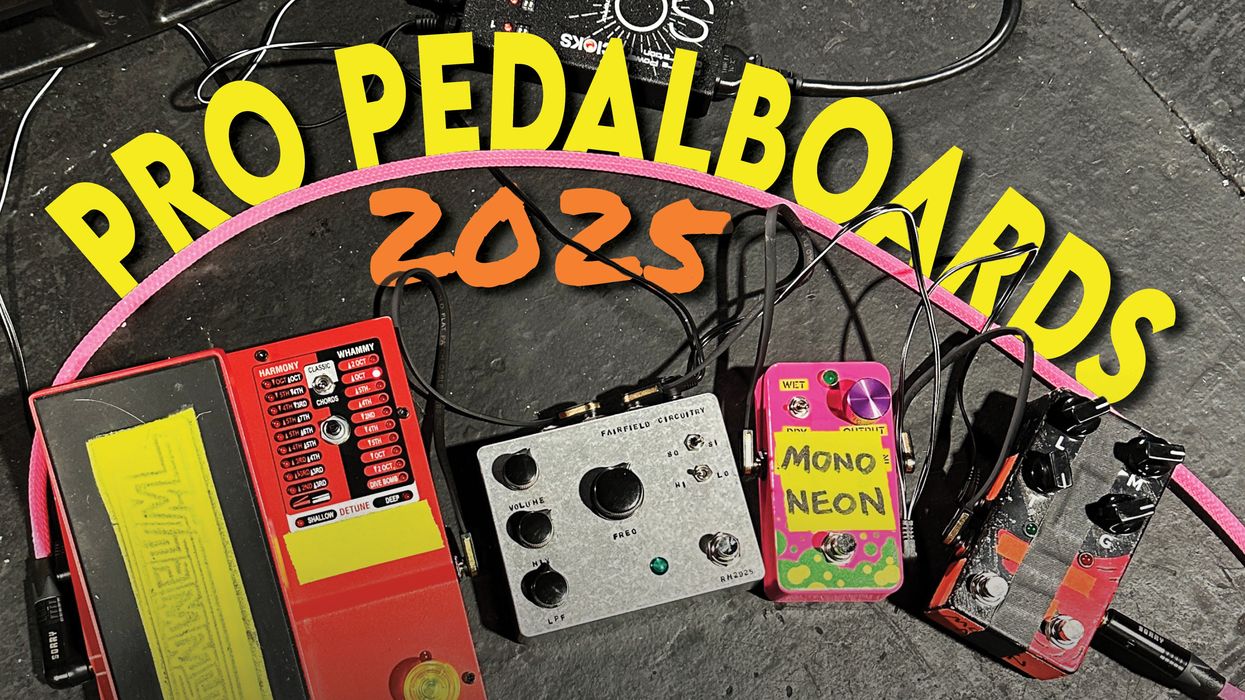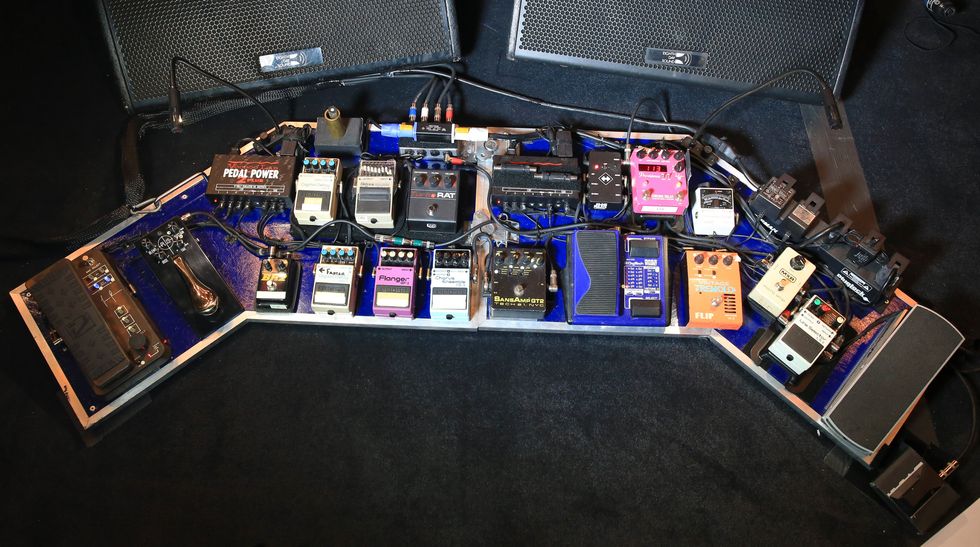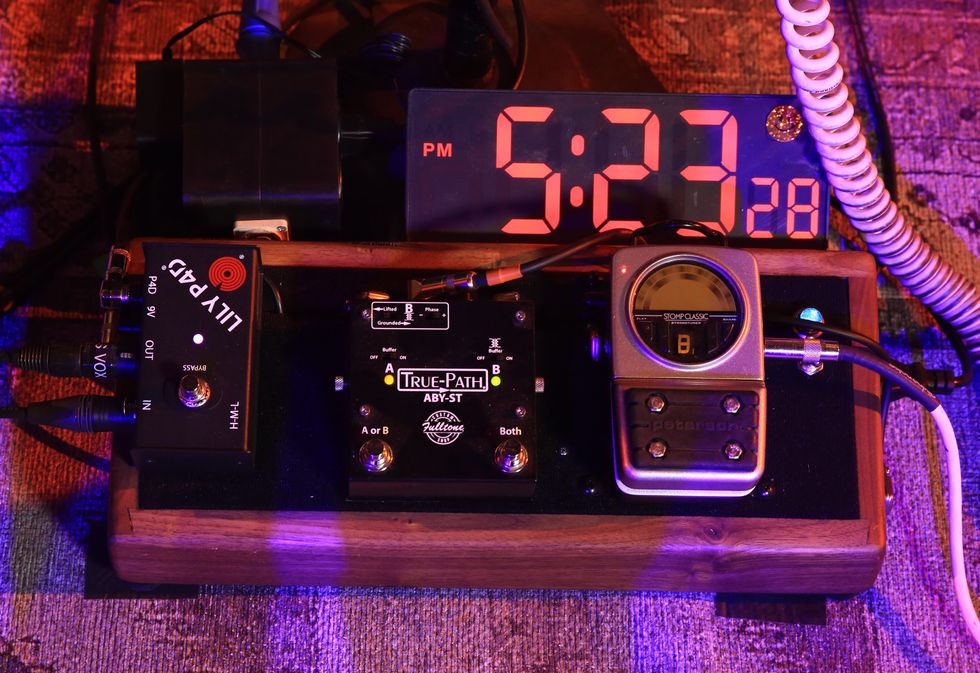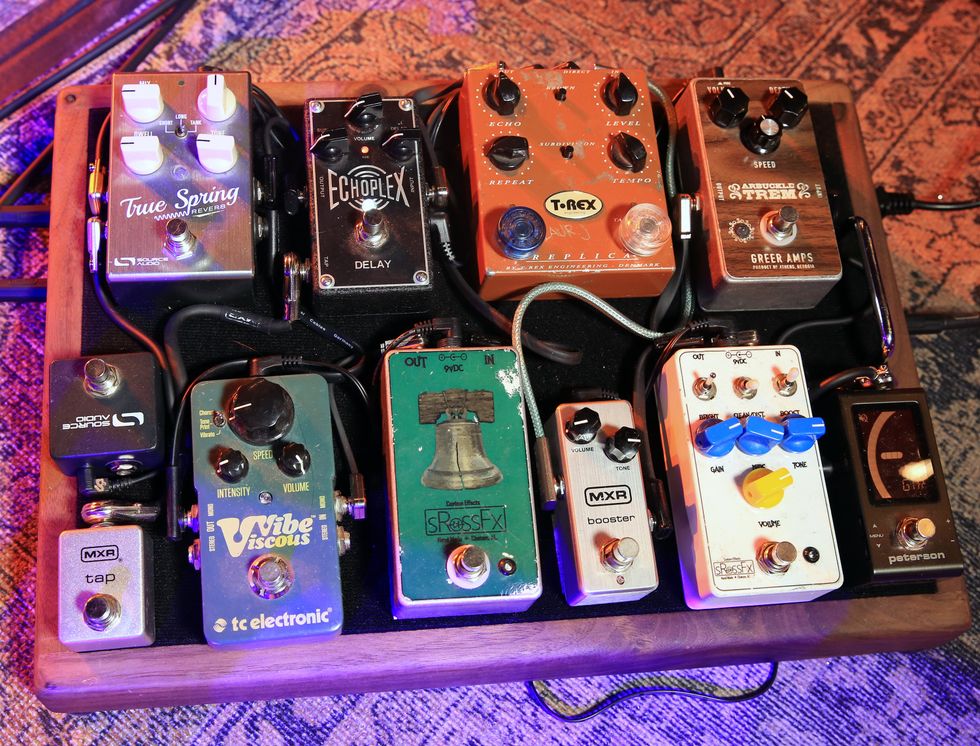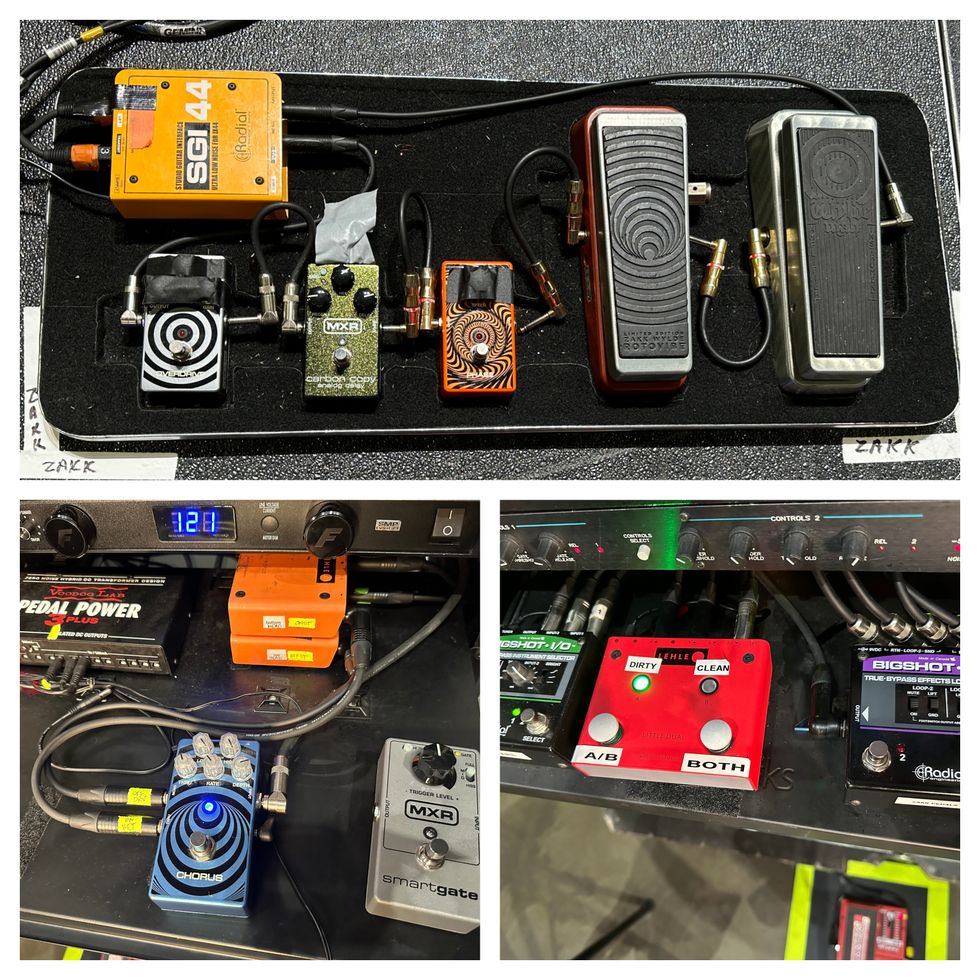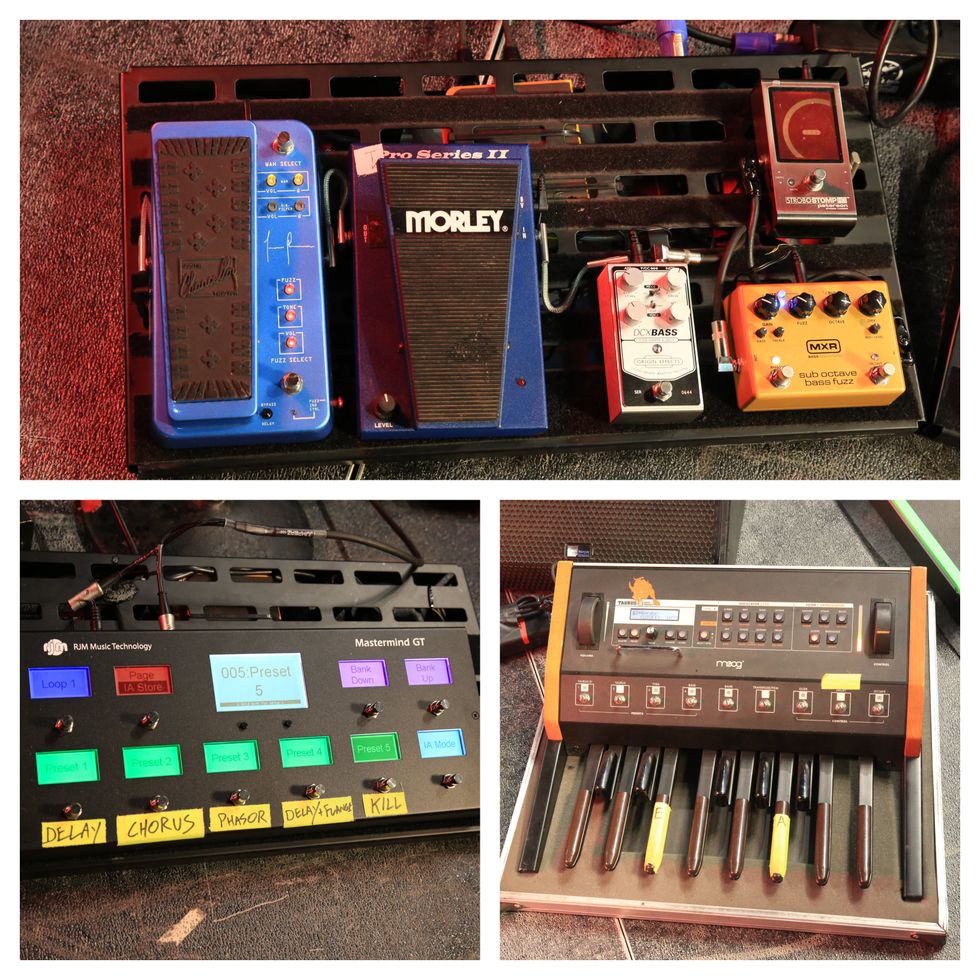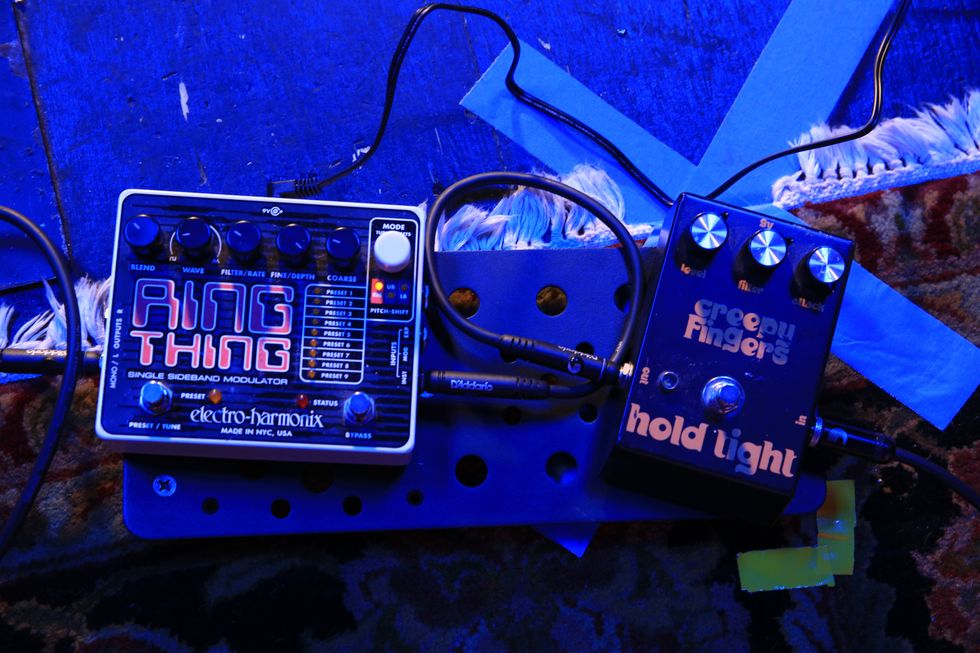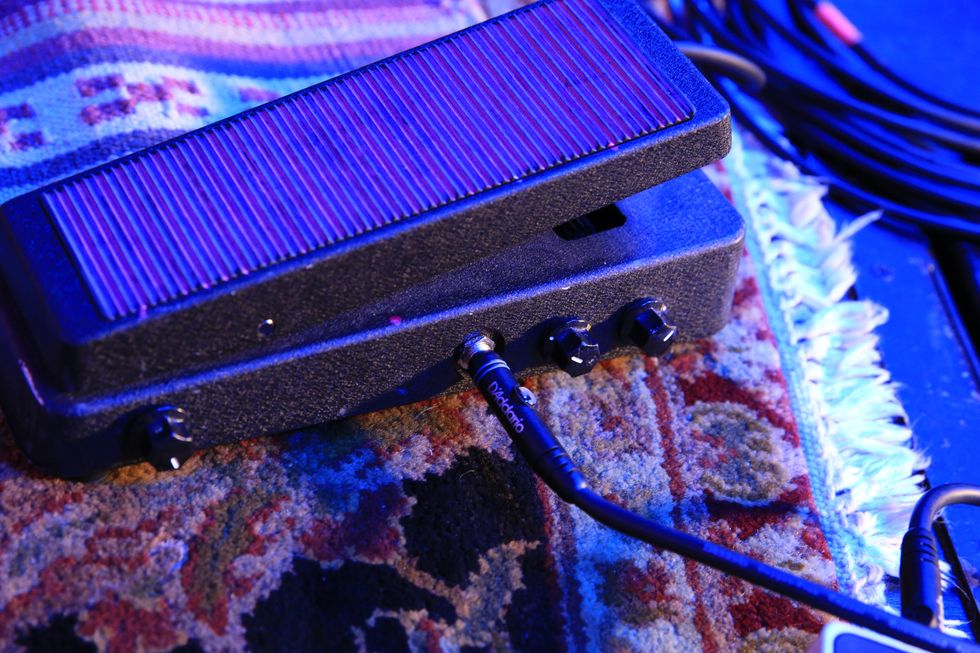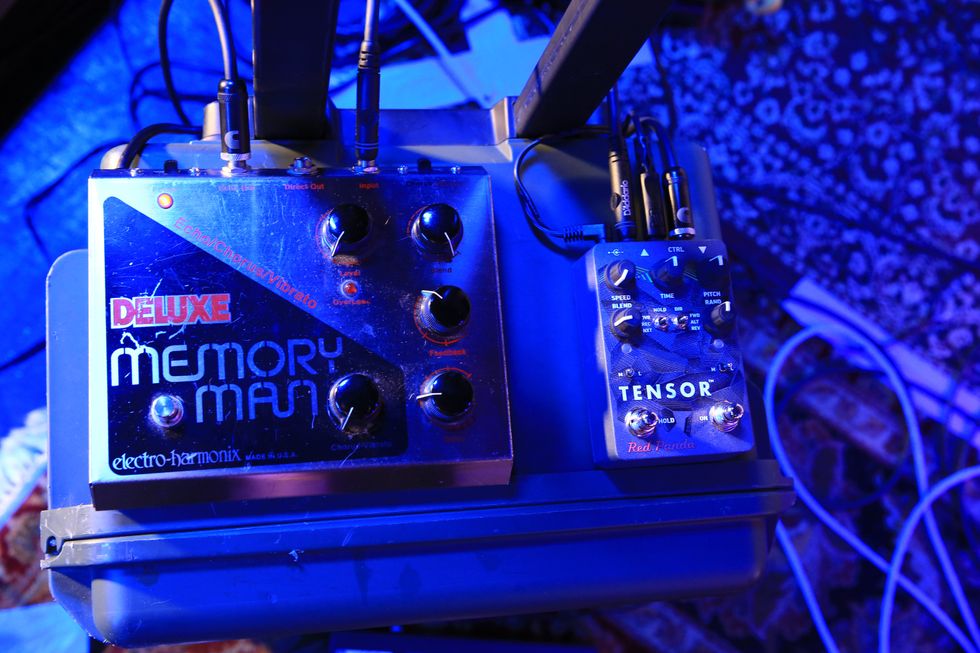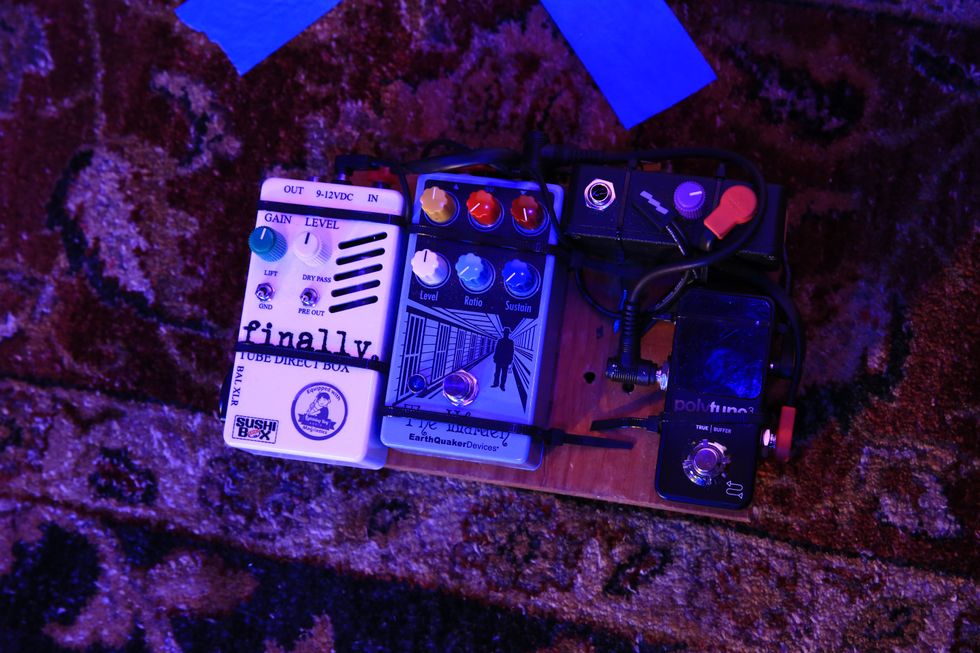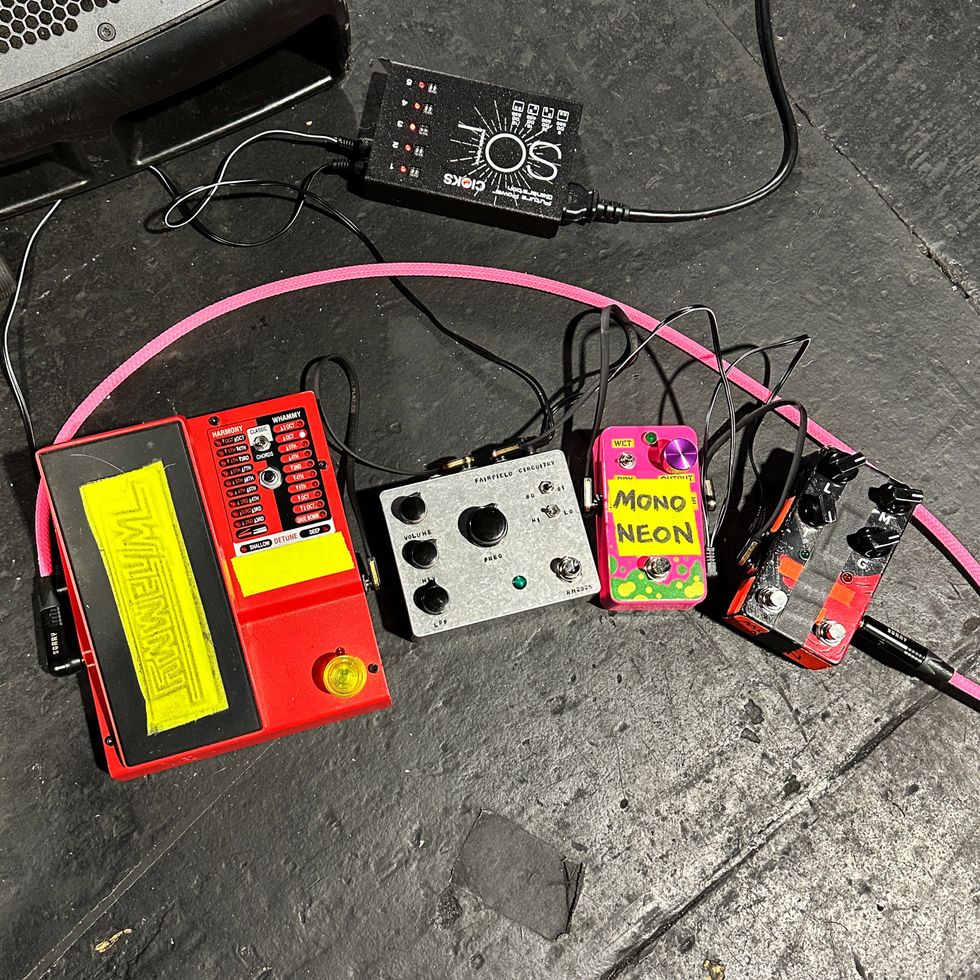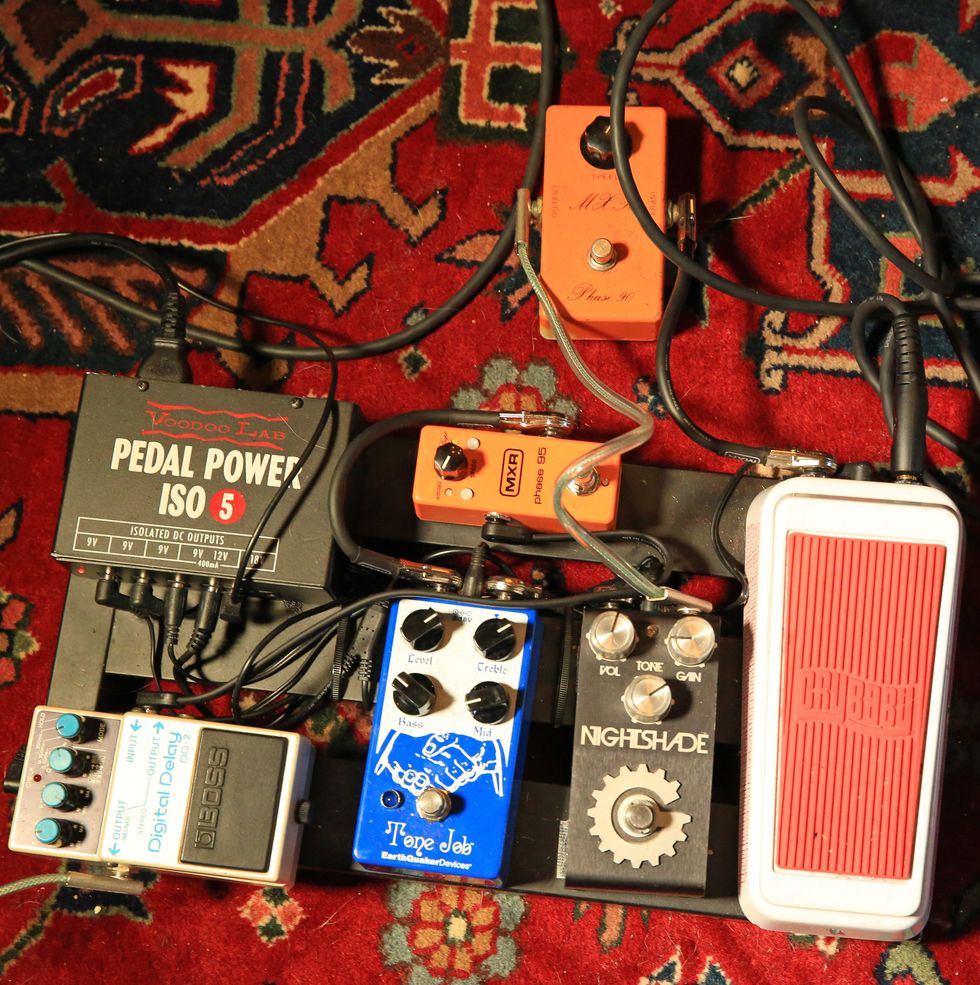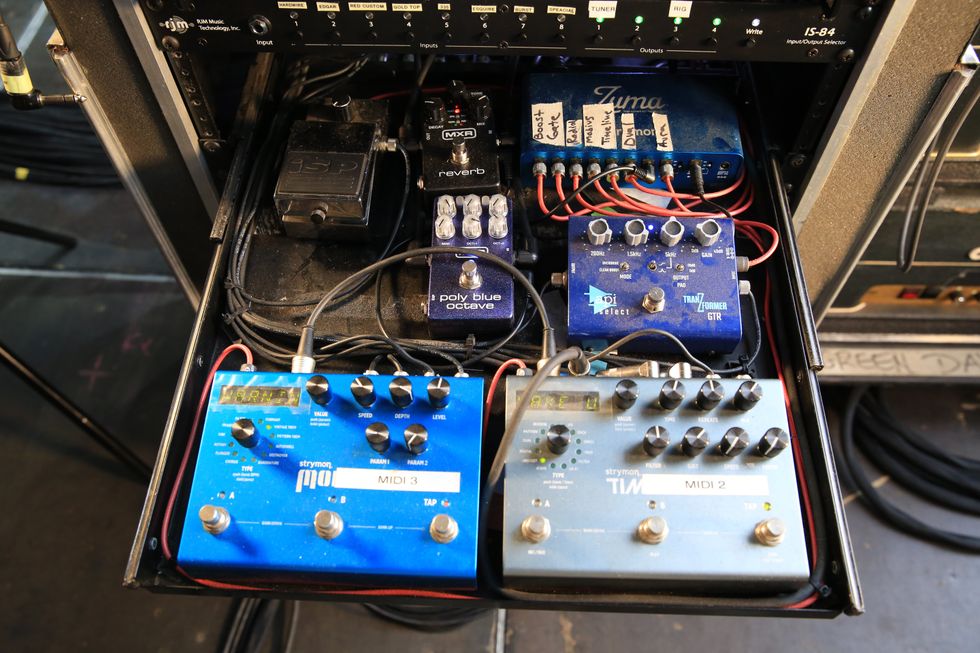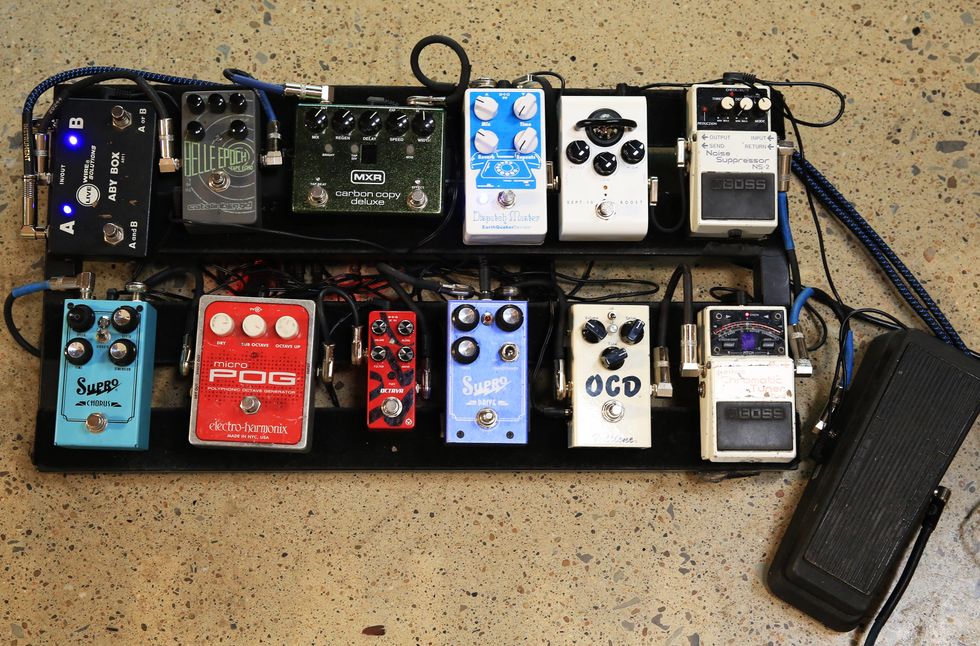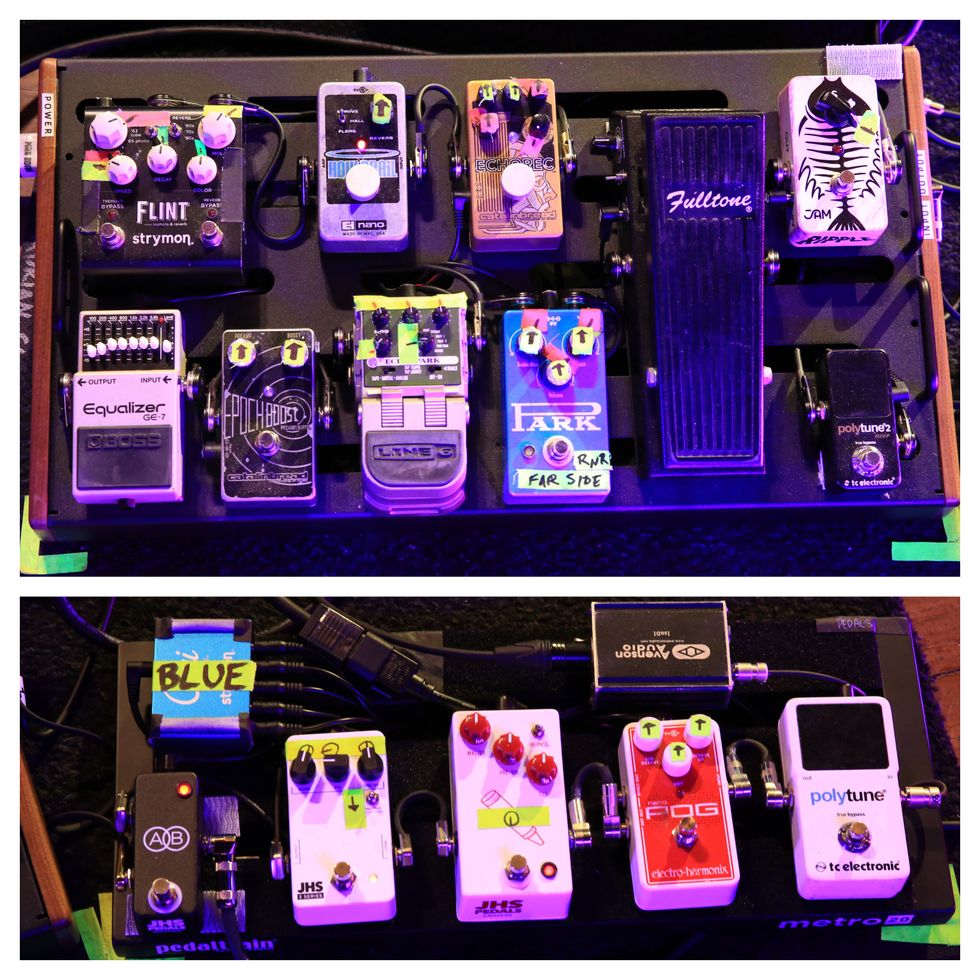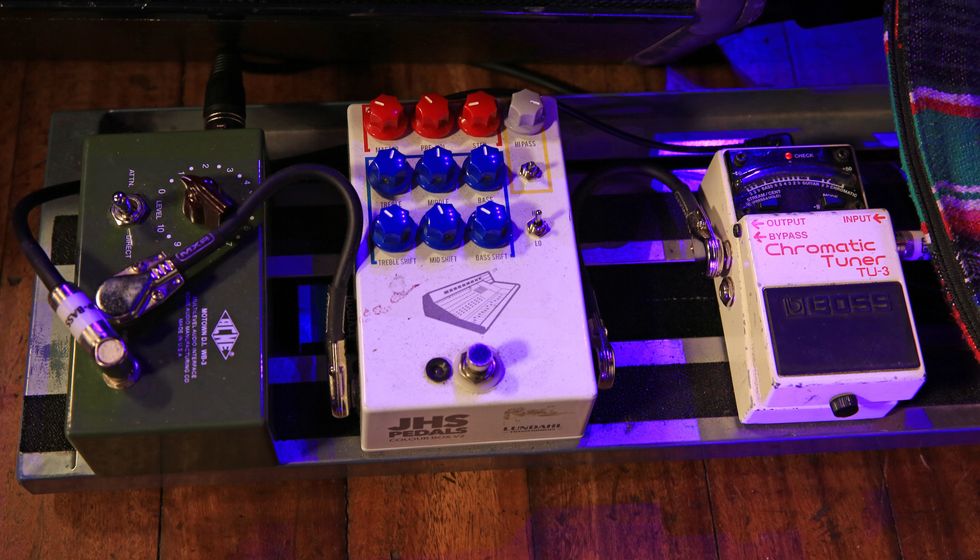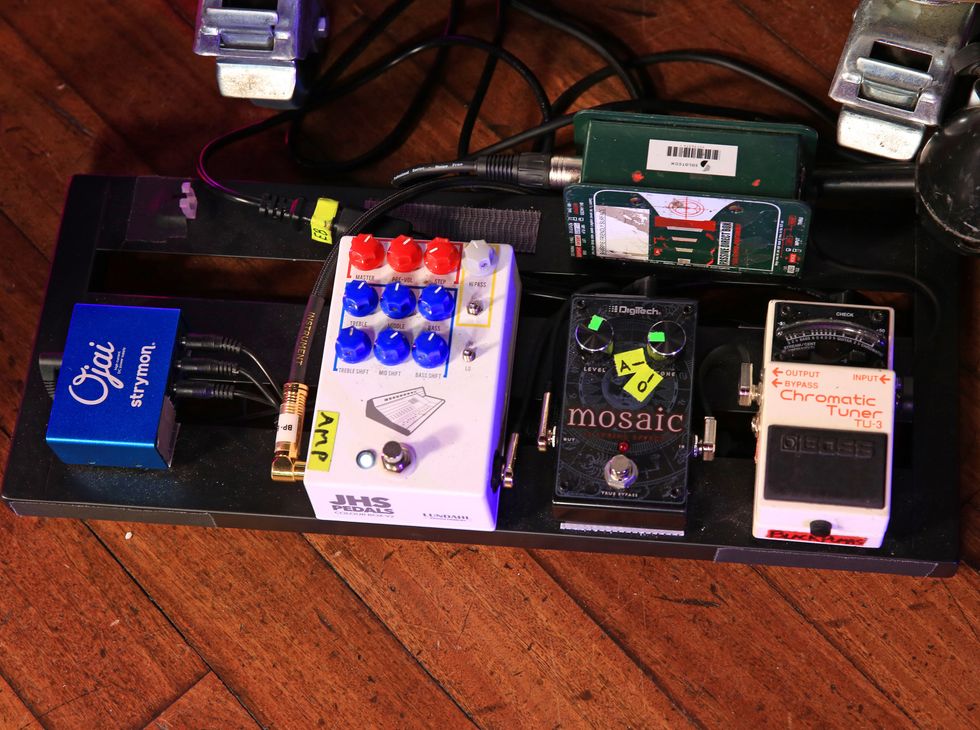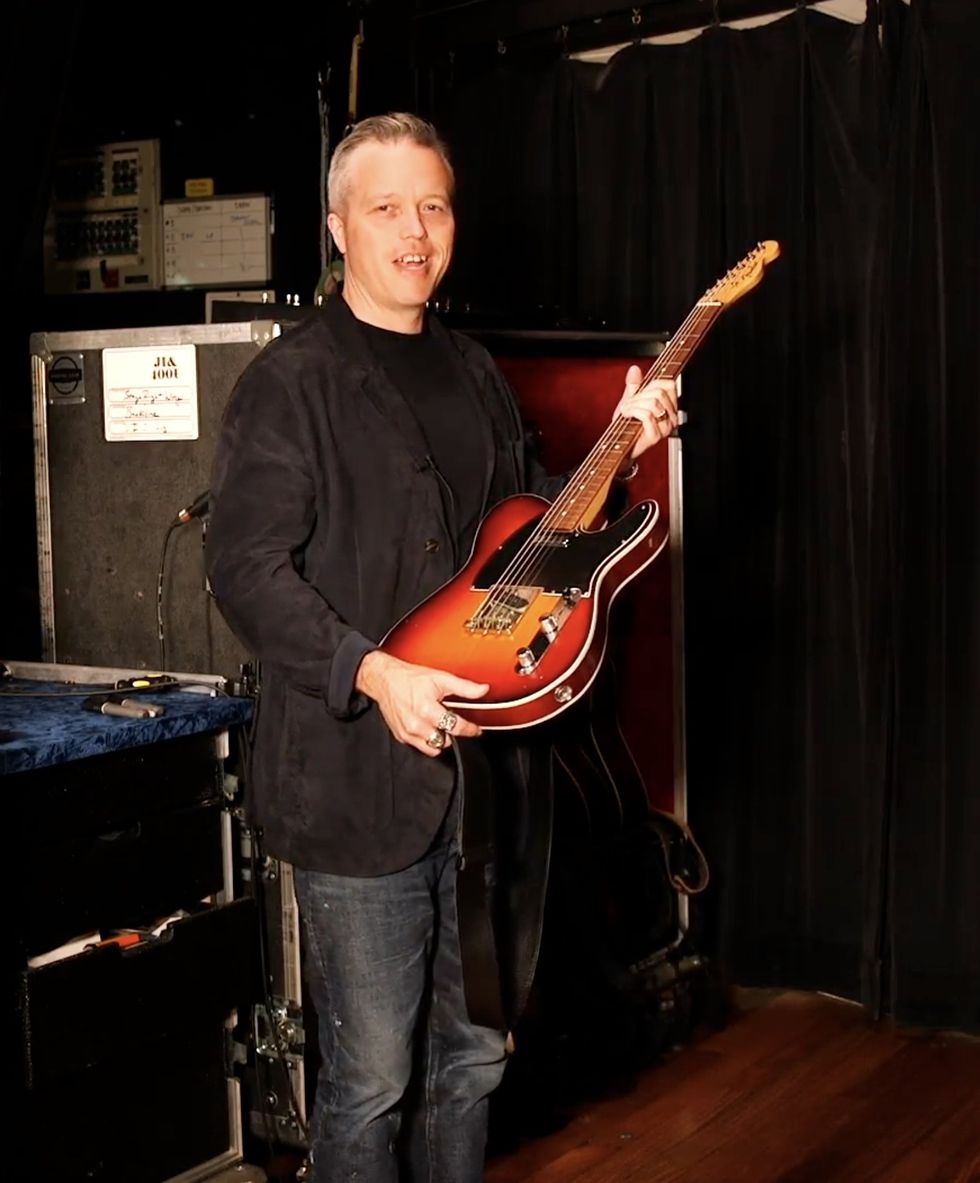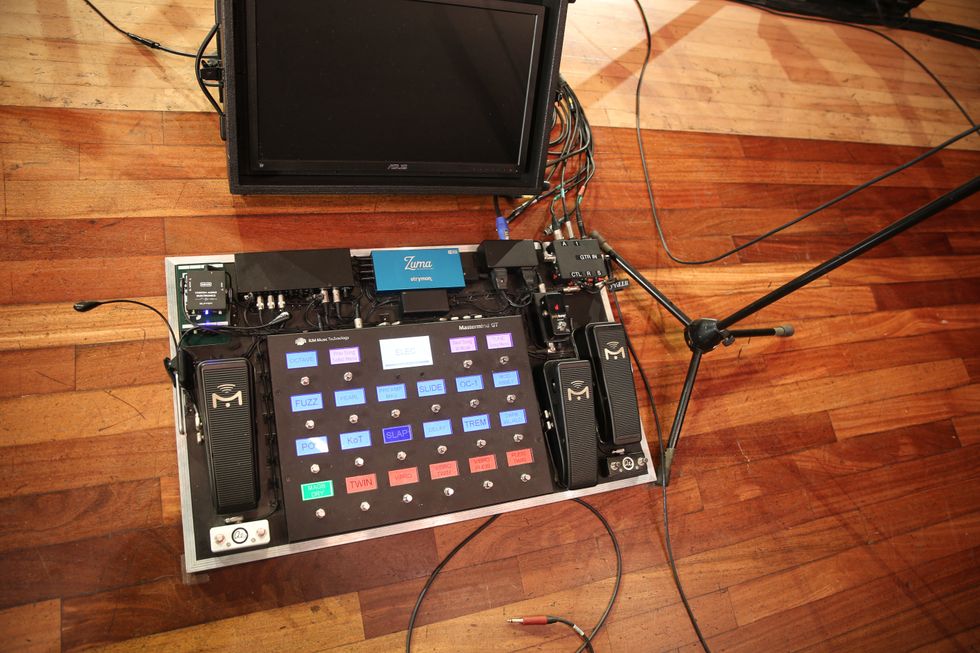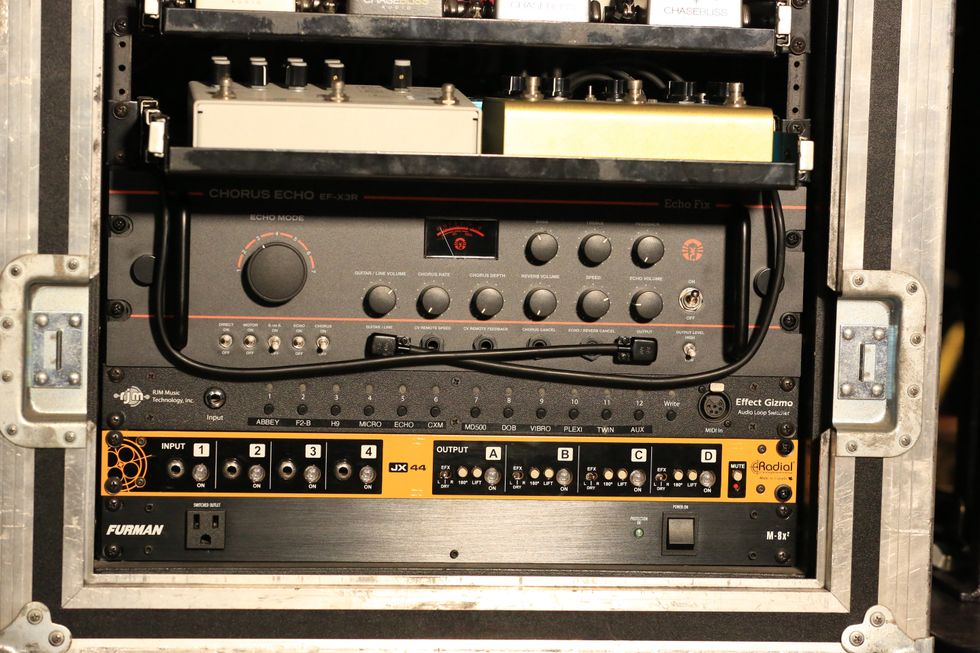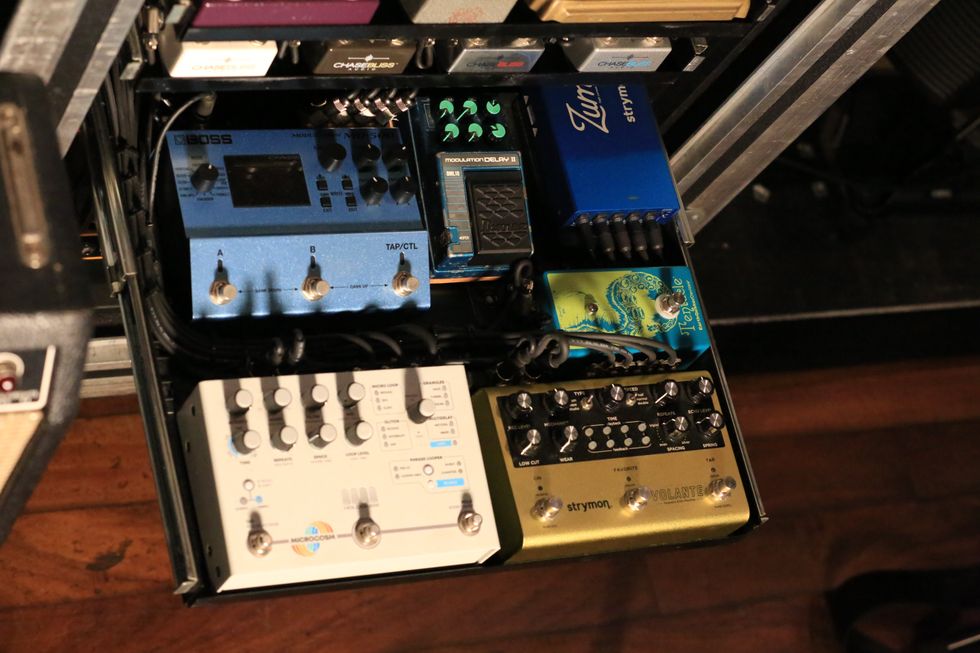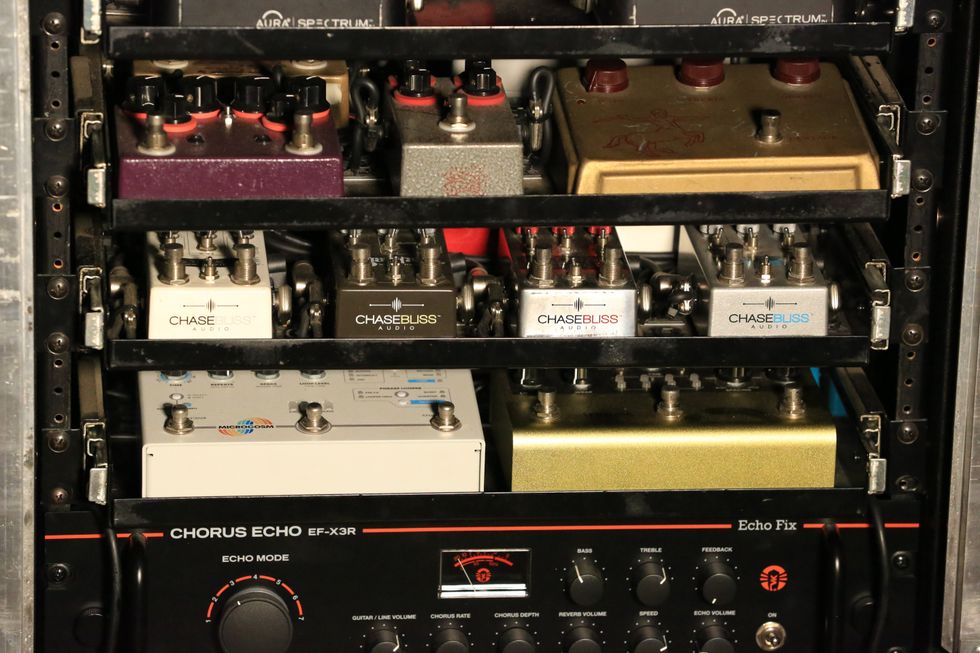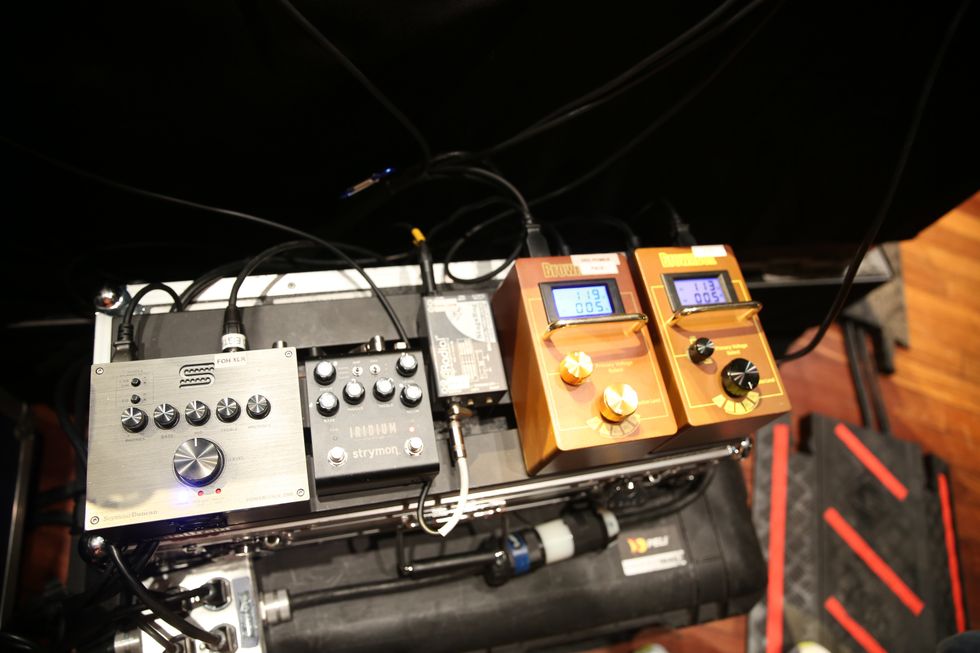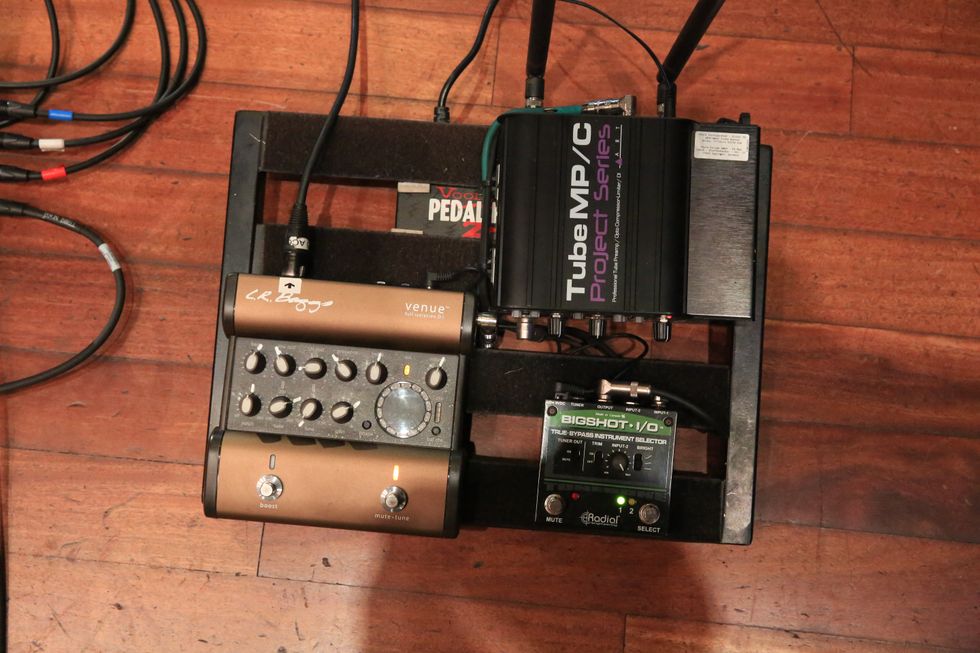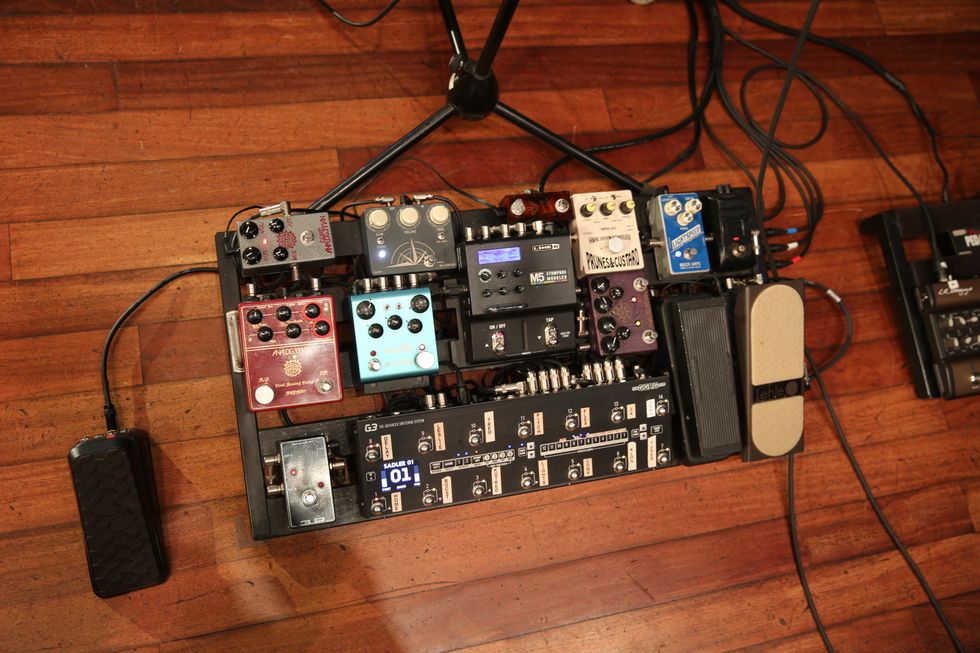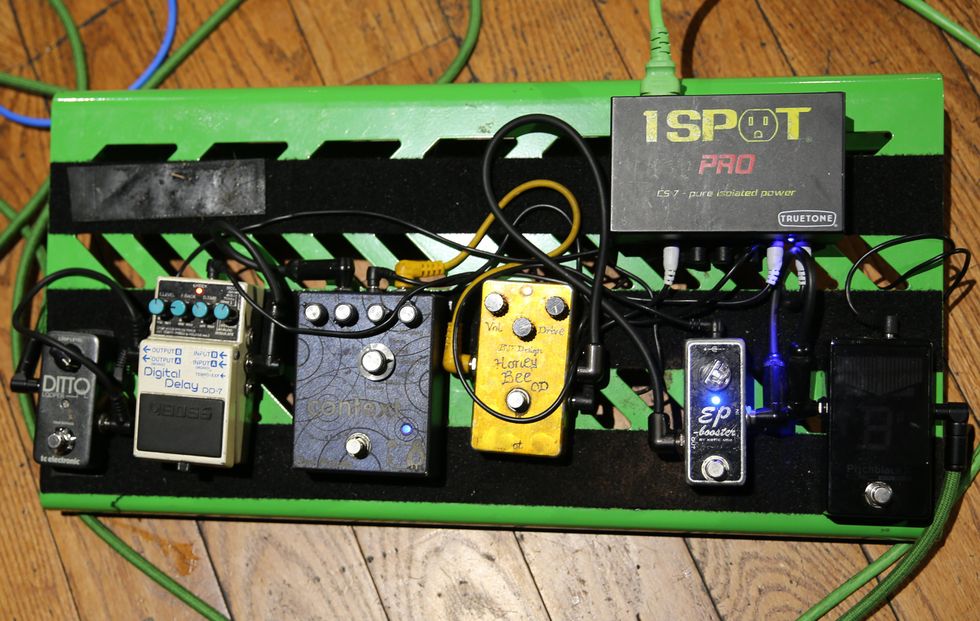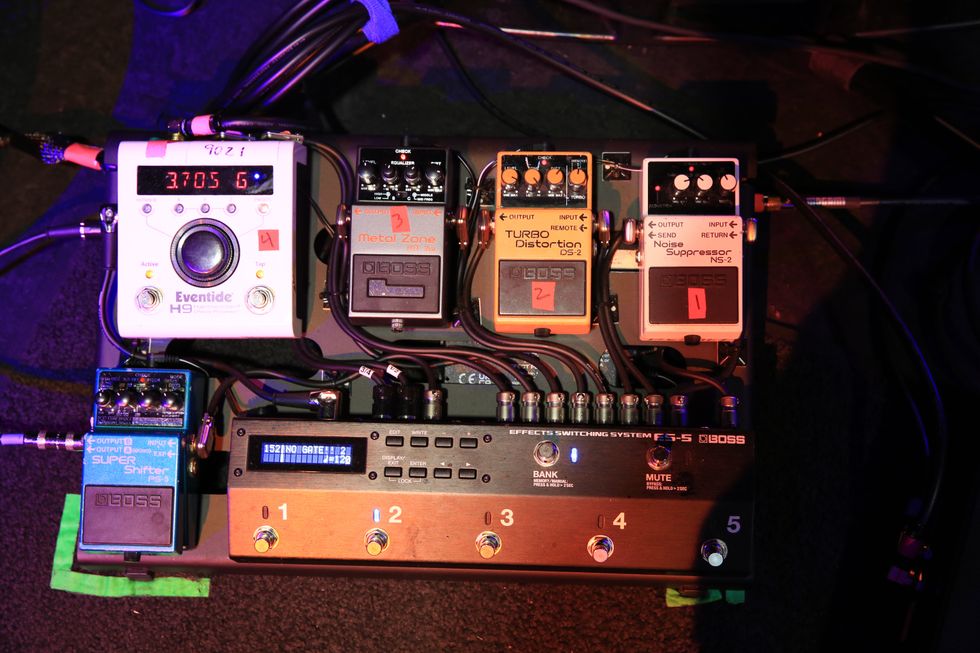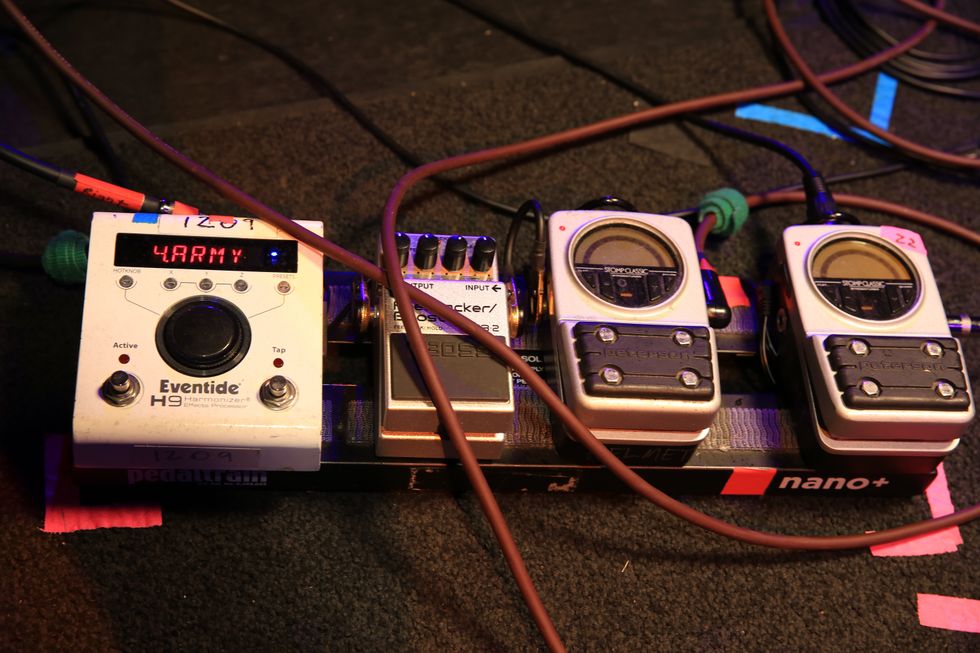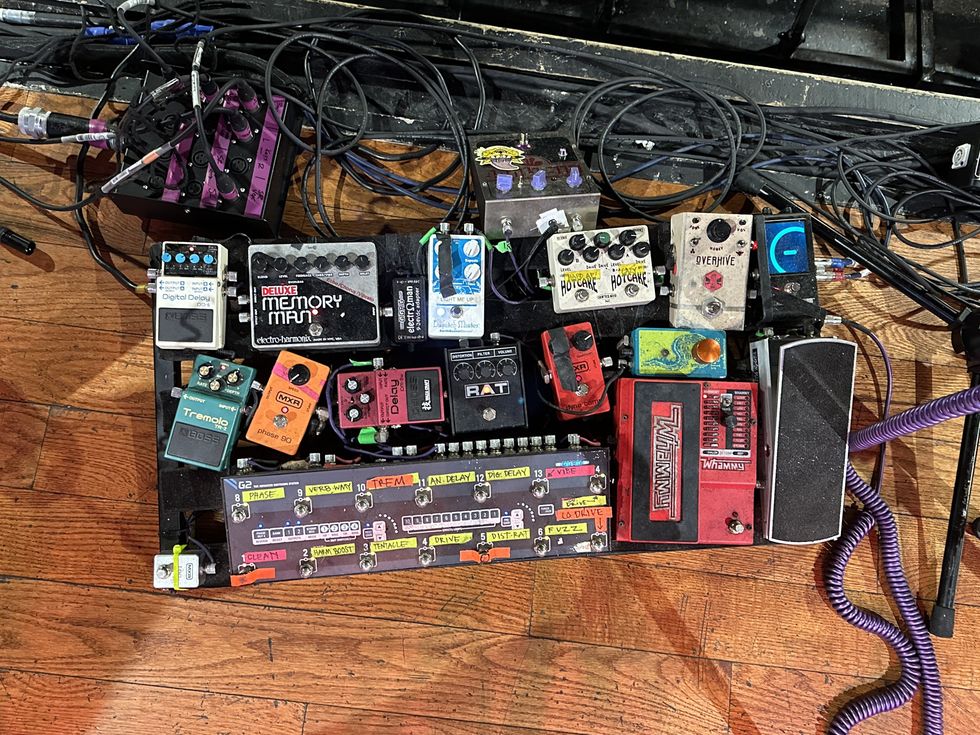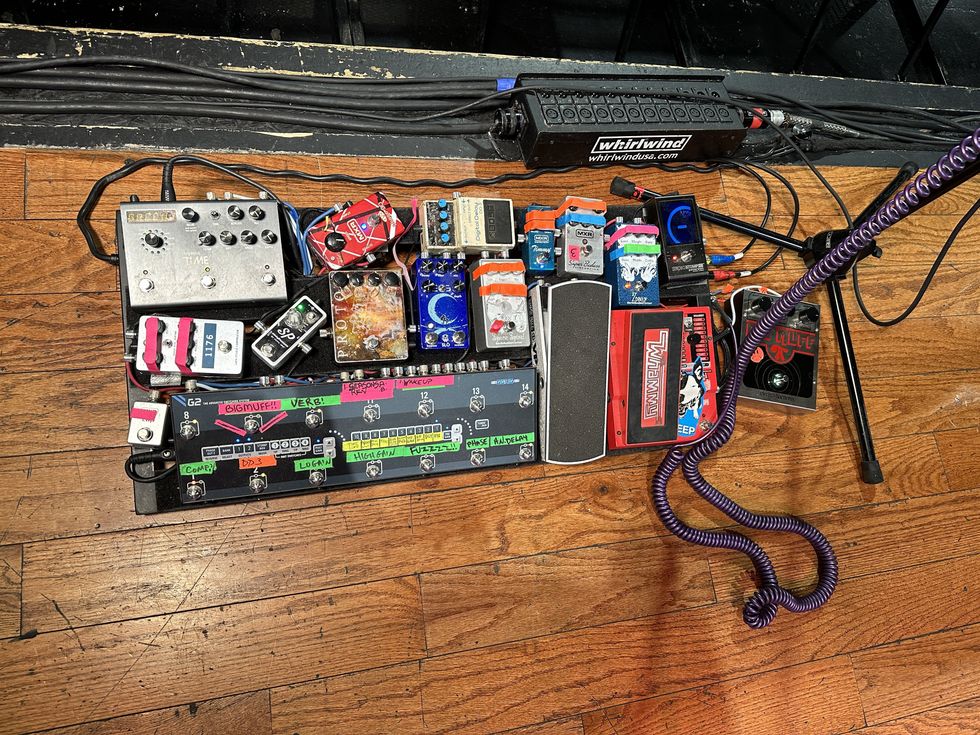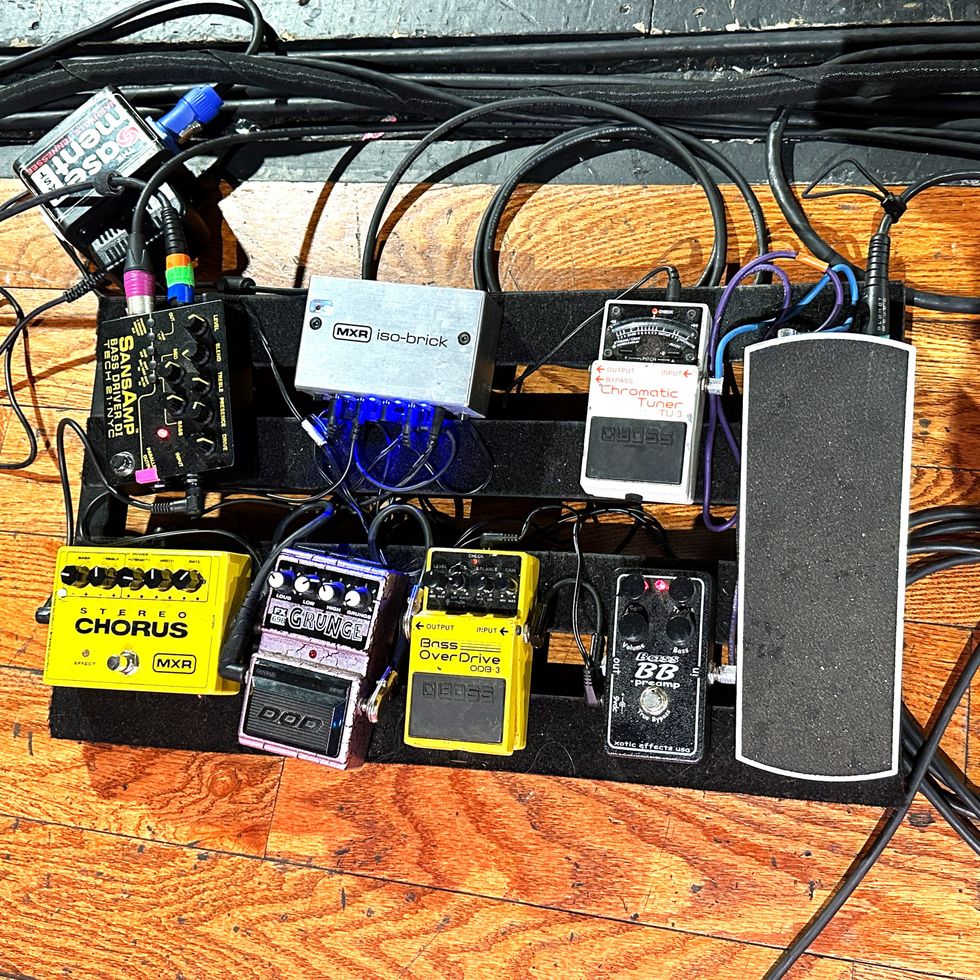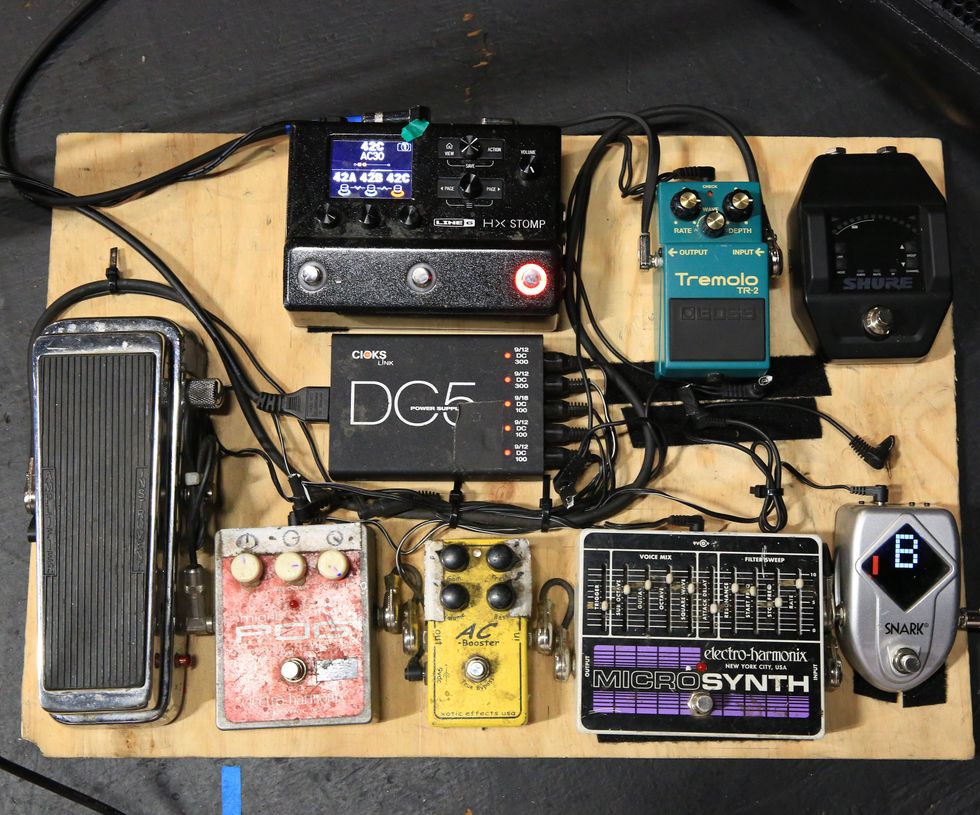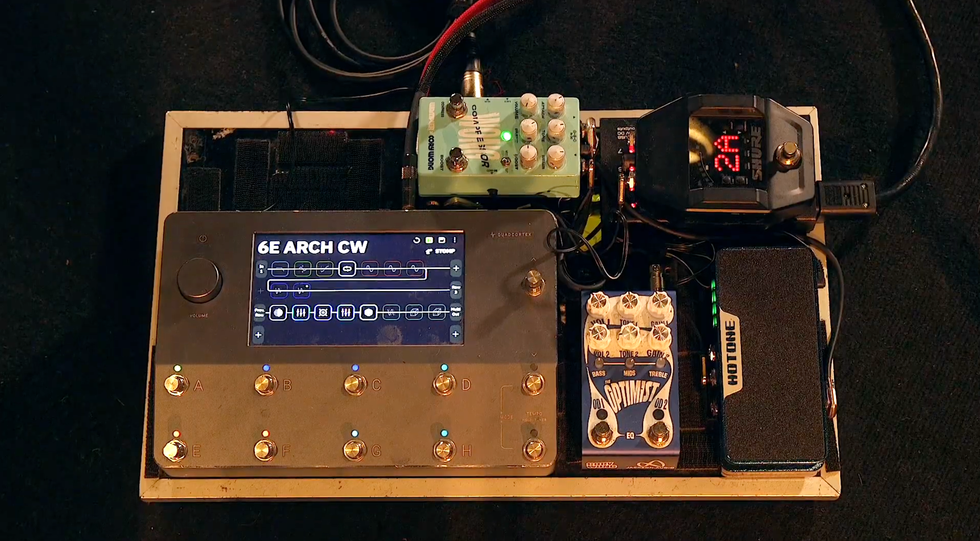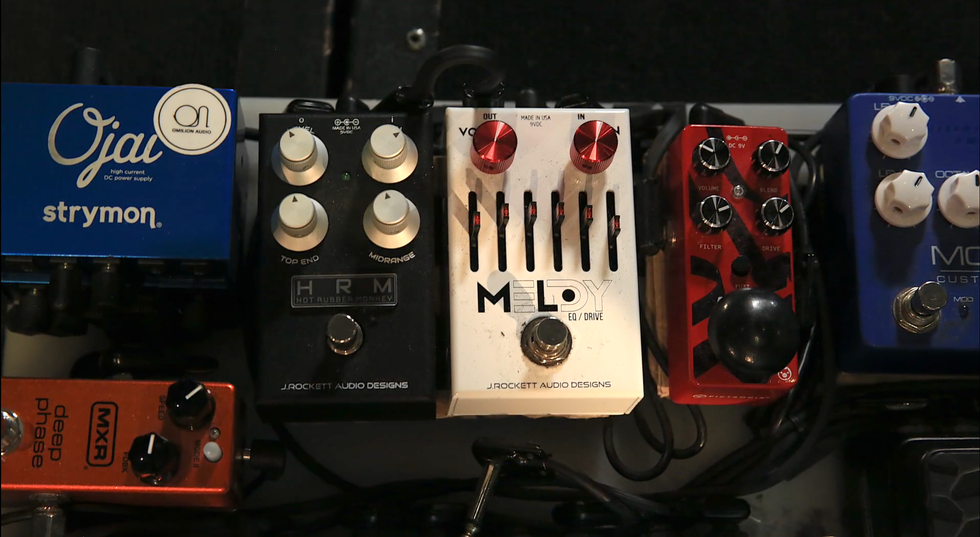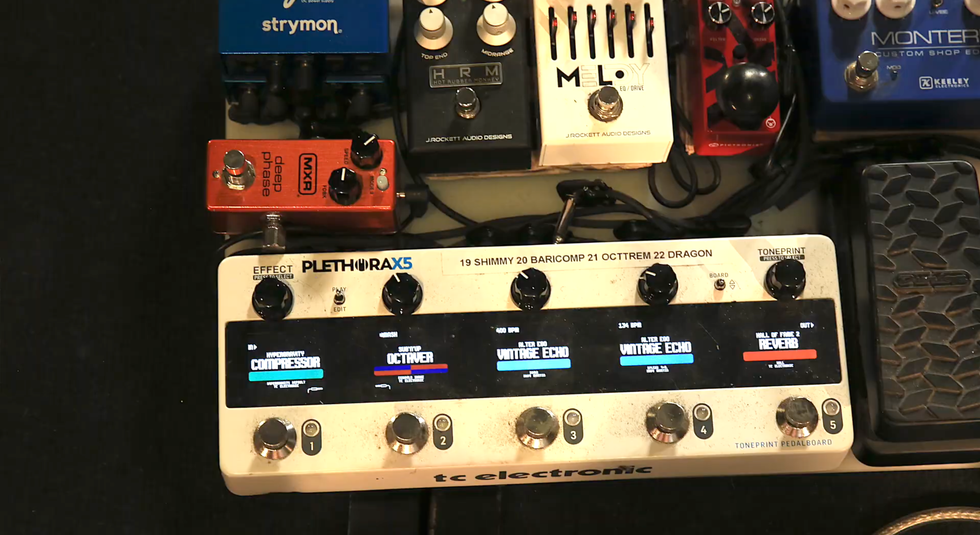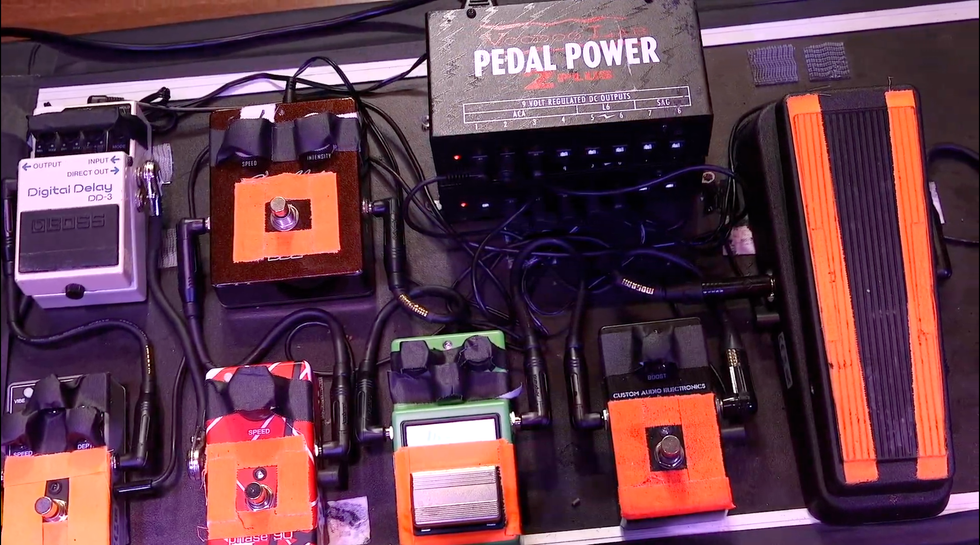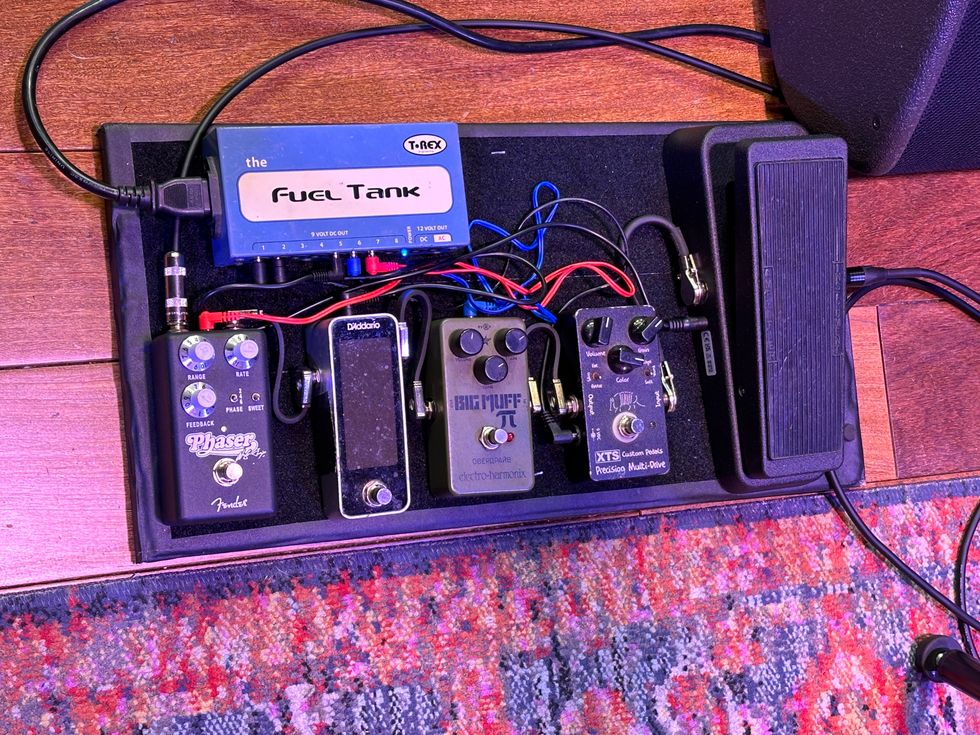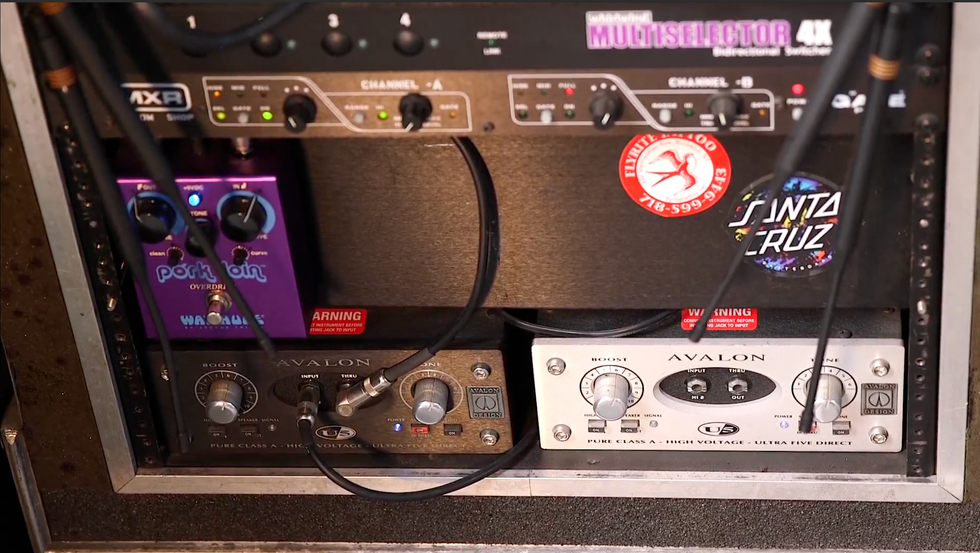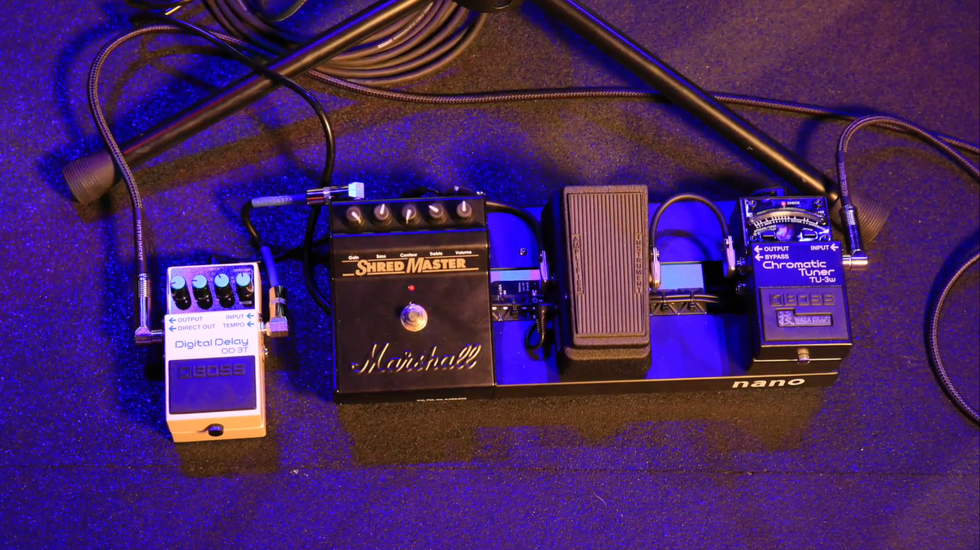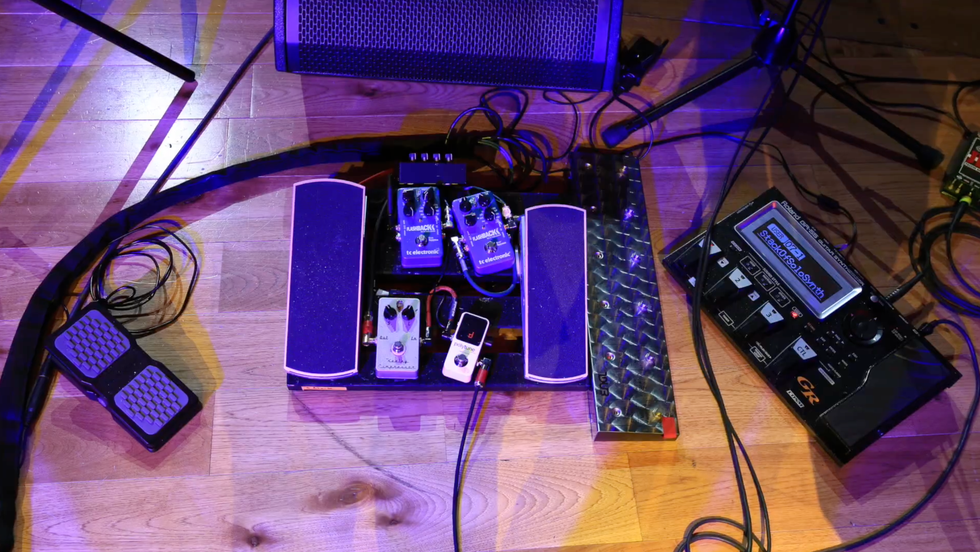As we approach NAMM and CES season, there’s no shortage of new recording tools vying for our attention. Here are some of the latest whose promised features slapped us out of our holiday stupor. We haven’t tested them all yet, but we’ve read enough to make us want to!
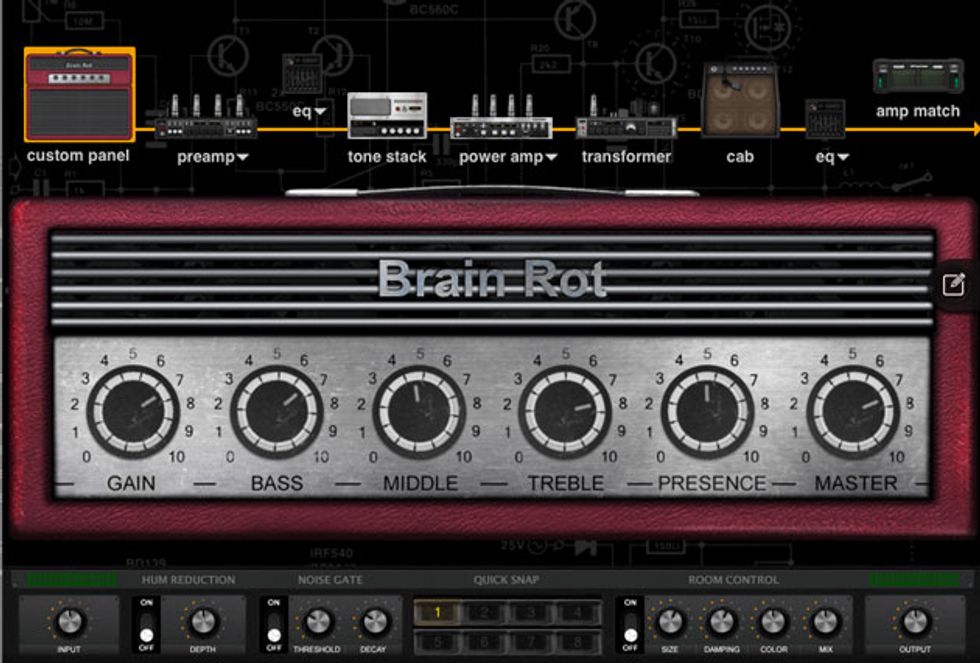
Positive Grid BIAS Professional
Positive Gridrecently made a mobile-recording splash with BIAS iOS, an inexpensive amp-modeling app that wrings excellent tones from iPads and iPhones. Now they’ve introduced a desktop version: an AU/VST/AAX/RTAS plug-in that works with most current Mac and PC DAWs. BIAS offers extreme customization via a chain of virtual components, letting you specify everything from modeled tone stack and rectifier tube through cab choice, simulated mic placement, and the onscreen appearance of your faux-amp. You can share your creations and download ones from other users via the integrated “ToneCloud” browser. One killer feature is the new amp-matching function: Record a snippet on an amp you’d like to profile, approximate it as closely as possible with BIAS’s standard controls, and then apply matching—which molds your EQ spectrum to mimic the target tone. The BIAS plug-in is attractive, powerful, and just plain fun—and like most amp modelers, it’s a great sound-design tool for non-electric guitar tracks. (BIAS also offers the $99 BIAS Desktop, which omits amp matching, ToneCloud, and some expansion packs included with the pro version.)$199 direct
positivegrid.com
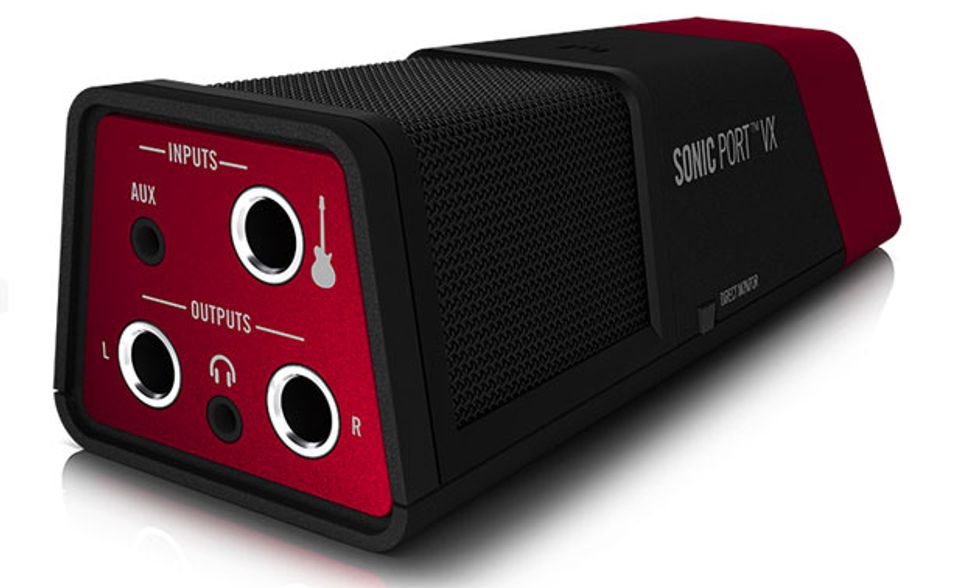
Line 6 Sonic Port VX
Guitarists on the go love the convenience and low cost of today’s mobile audio interfaces, but we’re less enamored with their often flimsy construction, or cumbersome breakout cables that make recording a clumsy ordeal. Line 6’s latest interface addresses both concerns. Its plastic trapezoidal enclosure feels solid and is noticeably lacking in protruding knobs with pot shafts that tend to snap under the rigors of the road. It has both USB and Lightning jacks to connect to your laptop or iOS device. There are instrument- and line-level inputs for recording electric guitars and basses, as well as keyboards, drum machines, and the like. The unit includes two built-in condenser microphone systems (a stereo pair plus a front-facing mono capsule) for tracking acoustic guitar, vocals, or band rehearsal without schlepping additional mics and cables. The s outputs can feed PAs, amps, powered monitors, and analog recording inputs. Thoughtful extras include a tabletop stand/mic-stand adapter, a 1/4" camera-tripod thread, the ability to power both Sonic Port and your iOS device from a single power supply, and a bundled copy of Line 6’s Mobile POD app, an amp/effect modeler for iOS. Sure, there are many I/O options in this price range, but few can match Sonic Port VX’s ingenious design and savvy, guitar-centric features.$199 street
line6.com
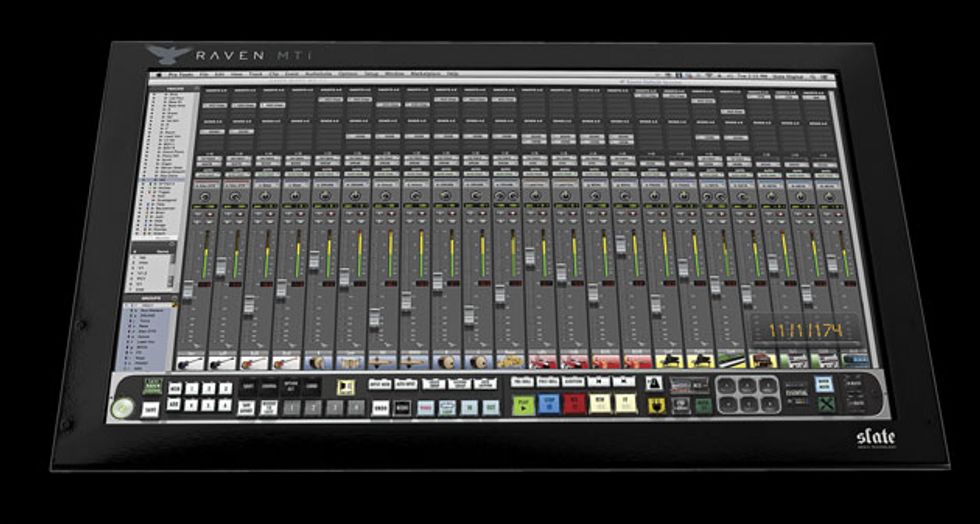
Slate Media Technology Raven MTi
Tablet-based recording is still defining itself, and desktop systems will probably remain the pro standard for years to come. Yet even recordists with access to top-tier studio systems envy one iOS tablet feature: a multi-touch interface that lets you control several parameters simultaneously. For many engineers, adjusting one control at a time with a mouse or trackpad doesn’t cut it, hence the popularity of control surfaces modeled after analog mixing desks. But these can cost $10 grand or more. Enter Raven MTi, a 27" touchscreen interface that lets you adjust up to six controls simultaneously. Yeah, sliding fingers across a screen feels nothing like piloting physical faders and knobs, but the system seems to match the functionality and workflow of a physical console at a price that many serious project-studio owners can afford. You can even adjust plug-ins by touch as if they were outboard gear. The system is highly customizable via many layout, shortcut, and hot-key options. Raven MTi currently supports only Mac-based Pro Tools and Logic systems, though Slate says support for PCs and other DAWs (including Cubase/Nuendo and Live) is coming soon.$1,999 street
slateproaudio.com
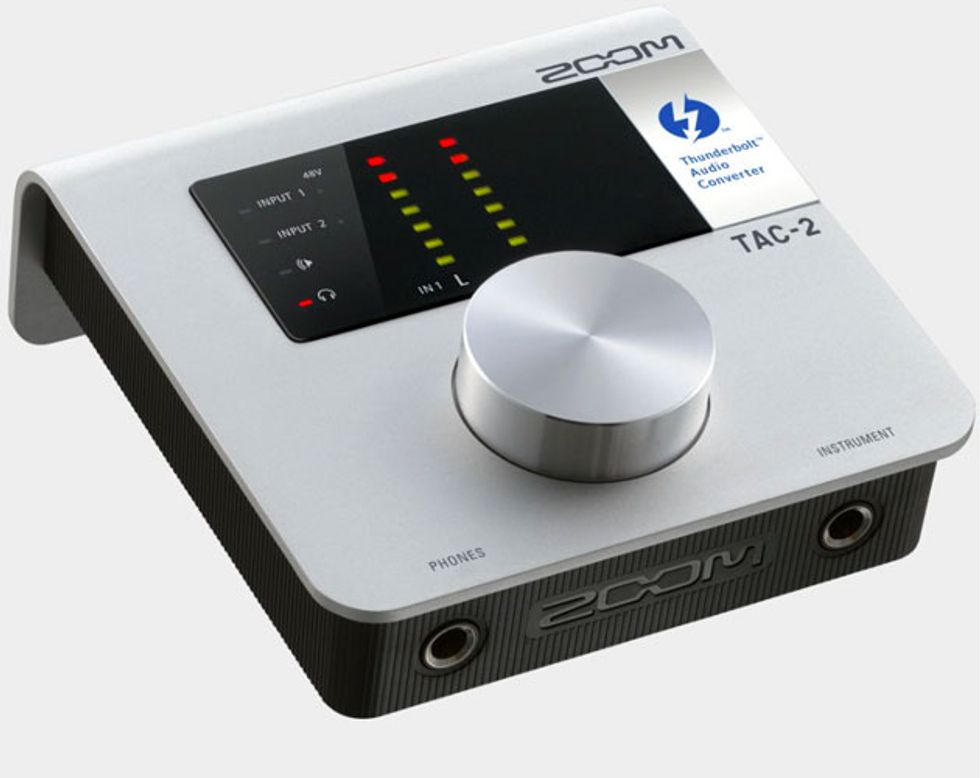
Zoom TAC-2
The Thunderbolt data-transfer protocol kicks ass—it’s twice as fast as USB 3.0 and 12 times faster than Firewire. It lets you do more in less time, with fewer glitches and clocking issues and less latency when overdubbing. Thunderbolt also provides a hefty 10 watts/18 volts—enough to power fancy convertor chips without an external power supply. So far, Thunderbolt has appeared mostly in rackmount gear and premium mobile devices such as the Universal Audio Apollo Twin. But Zoom’s TAC-2 is one of several new mobile devices offering Thunderbolt functionality at a home-studio price. The 2x-in/2x-out interface boasts XLR/TRS inputs, phantom power, low-latency monitoring, and Burr Brown mic preamps. You can capture instrument-level electric guitars and basses, line-level keyboards, and input from mics. TAC-2 might also suit listeners who store hi-res music collections on their computer drives and seek a superior link to their monitors. With its sleek silver enclosure and chunky multi-function knob, TAC-2 bears a more-than-passing resemblance to the pricier Apollo Twin, but the two units are apples and oranges—or at least apples and pears. TAC-2 is simpler and, unlike Apollo, isn’t paired with proprietary plug-ins, though there’s a simple software component to help set levels, access secondary functions, and add global reverb effects. TAC-2 supports 24-bit resolution and sample rates up to 192 kHz.$399 street
zoom-na.com
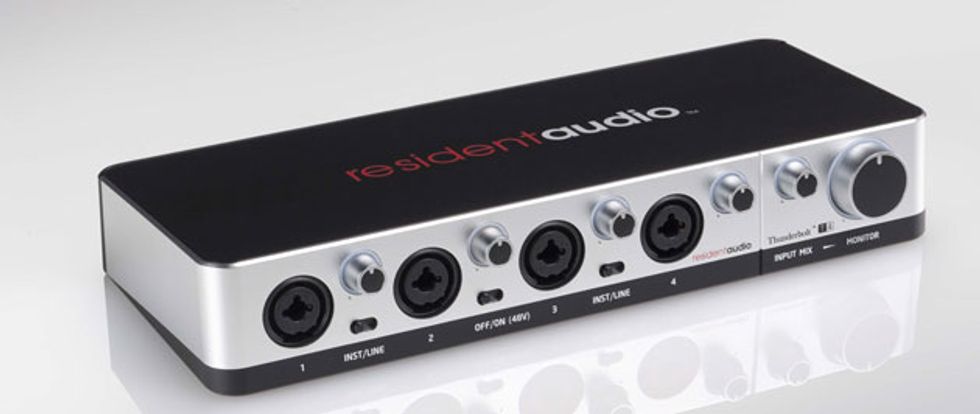
Resident Audio T4
Like the Zoom TAC-2 also profiled here, Resident Audio’s T4 is one of the first gadgets to offer Thunderbolt’s superior transfer speed, low-latency performance, and greater power capabilities at a solidly project-studio price. It’s billed as the world’s first Thunderbolt bus-powered, 4-channel interface—no external power supply required. The control layout is simple: The four combo XLR/TRS input jacks are switchable between instrument and line level, and each has a dedicated gain control. There are also knobs for master volume, headphone level, and input/output mix—and an LED ring indicates the current setting for each. There’s phantom power, MIDI I/O for remote level control, and a choice between 2-channel “mix” output and 4-channel “multi-channel” output. (No need to switch between them—T4 chooses automatically based on how many of the four 1/4" output jacks are being used.) T4 supports 24-bit resolution and sample rates up to 192 kHz. It’s compatible with all Thunderbolt Macs and some Thunderbolt-enabled PCs.$499 street
residentaudio.com
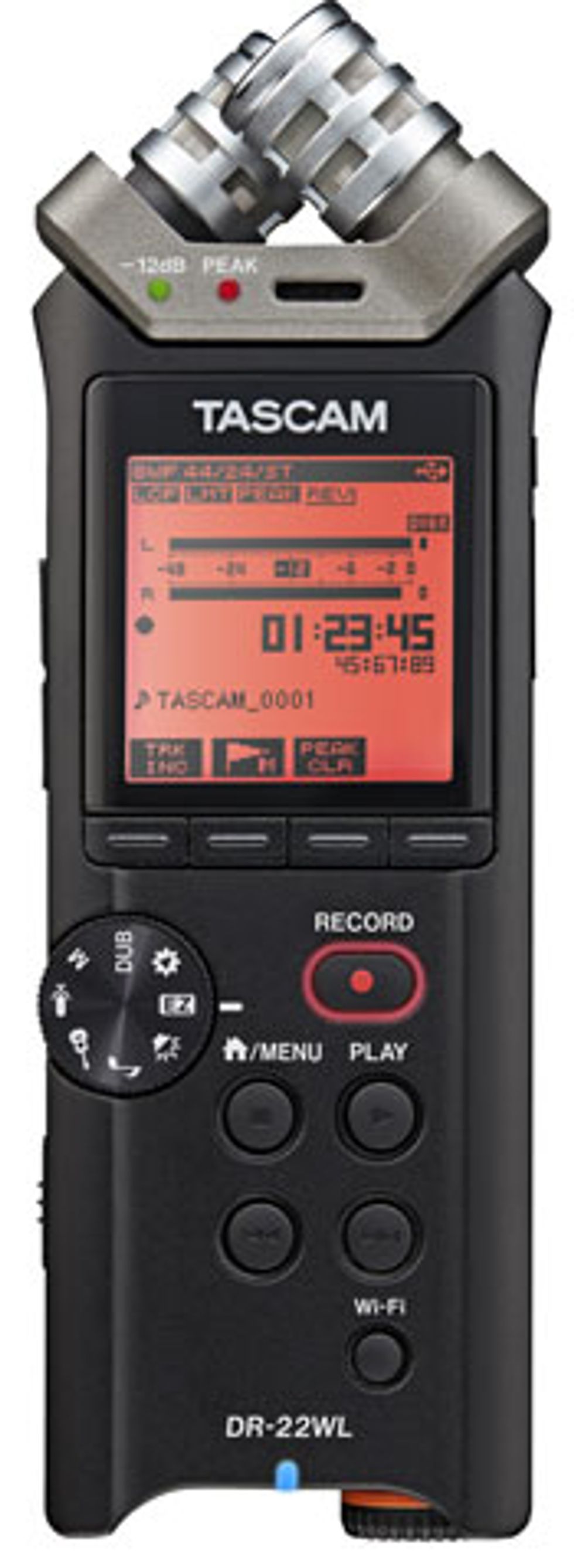
Tascam DR-22WL
Zoom, Tascam, Sony, and others have offered many appealing handheld digital recorder options in recent years. But the DR-22WL—Tascam’s new entry-level model—boasts clever new features at a more-than-modest price. While it lacks the four-channel capability and XLR mic inputs of its big brother, the $299 DR-44WL, both models can create their own wi-fi networks to enable wireless transfer and streaming. They also support wireless transport control via DR Control, Tascam’s free iOS/Android app—perfect for when you’re standing next to your amp at rehearsal, with the recorder across the room, positioned for an ensemble mix.The built-in condenser mics are configured as an X/Y pair for spacious stereo sound.A camera-style “scene” dial provides instant access to common settings, from high-input ones suitable for solo acoustic guitar to heavily padded ones capable of capturing brutally loud concerts and rehearsals without clipping. There’s also a dedicated input-level knob, location marking, and onboard reverb. And while the DW-22WL is strictly a 2-track recorder, a looper-like overdub function lets you build composite recordings without sacrificing your original file.
$149 street
tascam.com
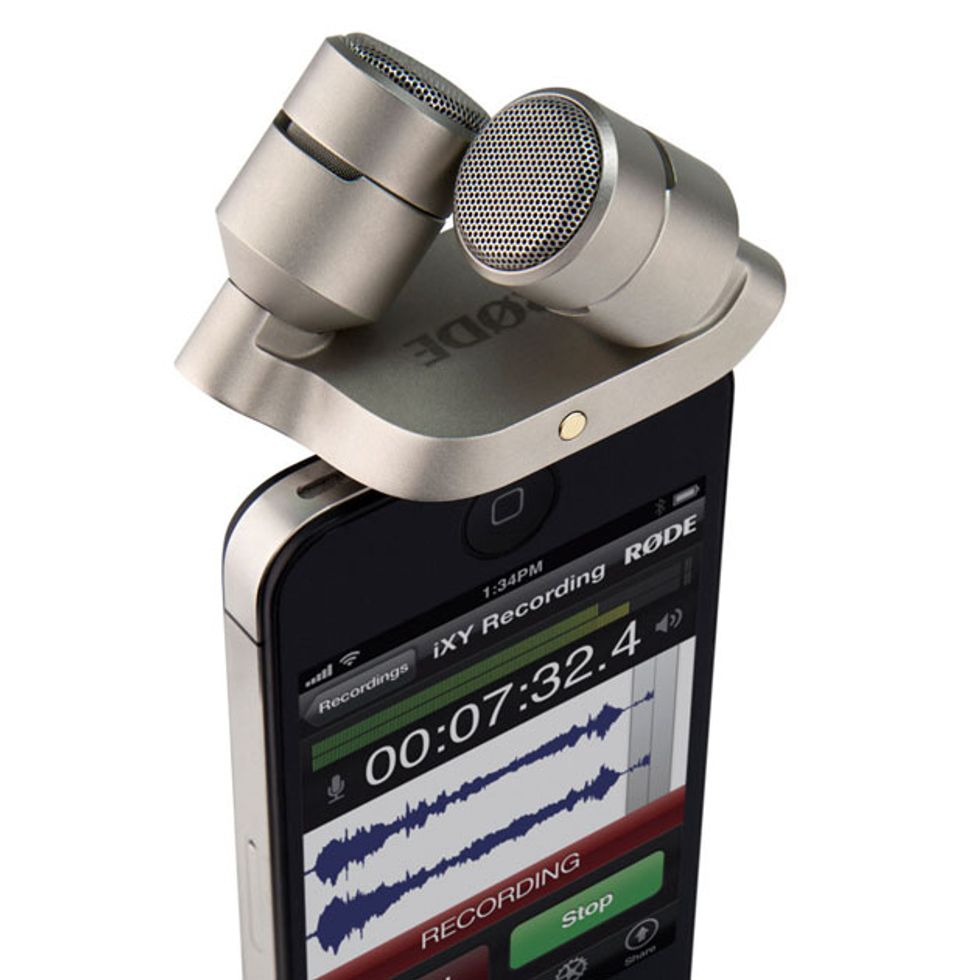
Rode iXY-L
Armed with an iPhone or iPad, do you really need another handheld recorder? Maybe not. The weakest audio links on phones and tablets are their cheap built-in mics. Third-party mic upgrades have been around almost as long as iOS, but they too have tended to be sonically underwhelming. But iXY-L, a snap-on stereo condenser mic in X/Y configuration, looks like a promising option. Similar to the mics on handheld recorders from Zoom, Tascam, and Sony, it connects to your device via its Lightning port. (Rode also offers a 30-pin version suitable for older iOS gizmos.) The unit performs its own A/D conversion, bypassing Apple’s audio circuitry and enabling 24-bit resolution and sample rates up to 96 kHz. Windscreen and zippered carrying case included.$199 street
rodemic.com
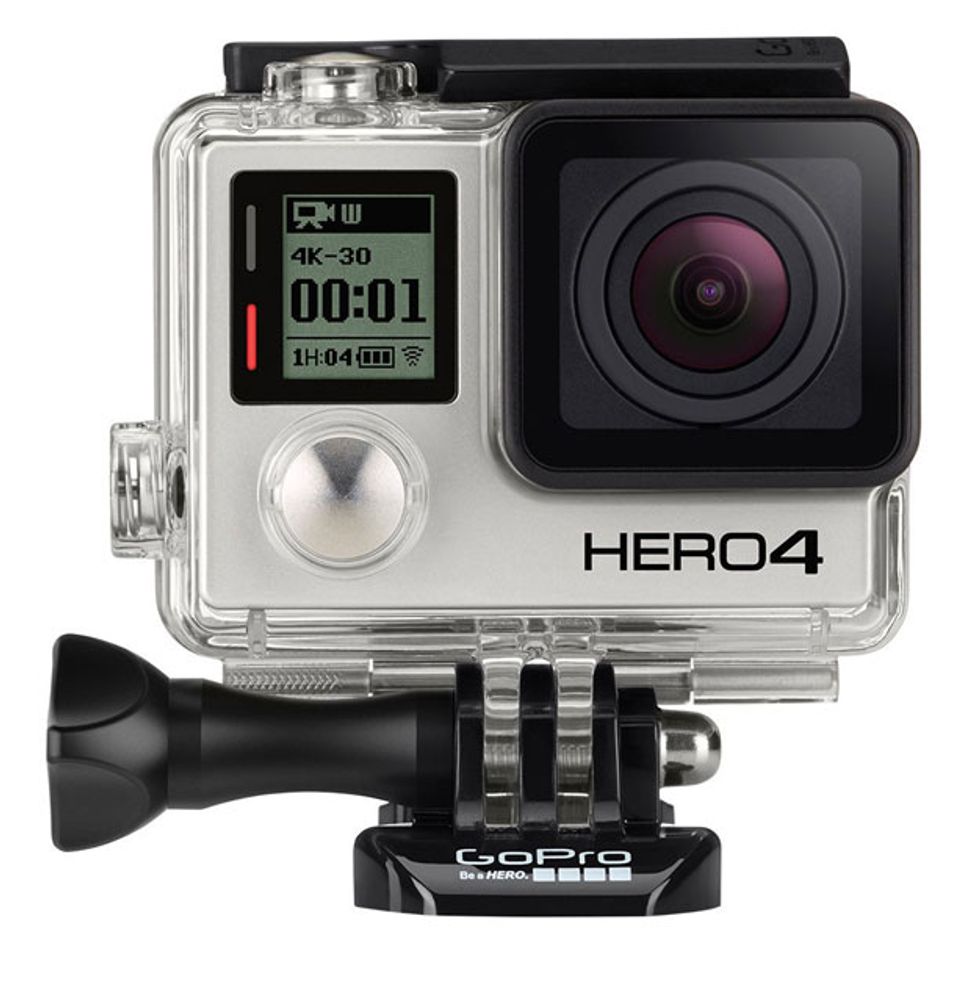
GoPro HERO4 Music Black
These days a portable HD video camera is practically essential gear for promoting your band, documenting gigs, or wowing YouTube with your preternatural shred skills. GoPro, known for creating near-bulletproof cameras that boldly rush in where most digital devices fear to tread, has bundled their latest flagship model, the HERO4 Black, with a set of specialized mounts perfect for securing the camera to headstocks, mic stands, pedalboards, or the rim of your drummer’s drool bucket. The camera boasts the latest GoPro specs: 4K video support at 30 fps, 12 mega-pixel photos, automatic low-light mode, a wide-angle lens, and extensive wi-fi and Bluetooth connectivity.$499 street
gopro.com
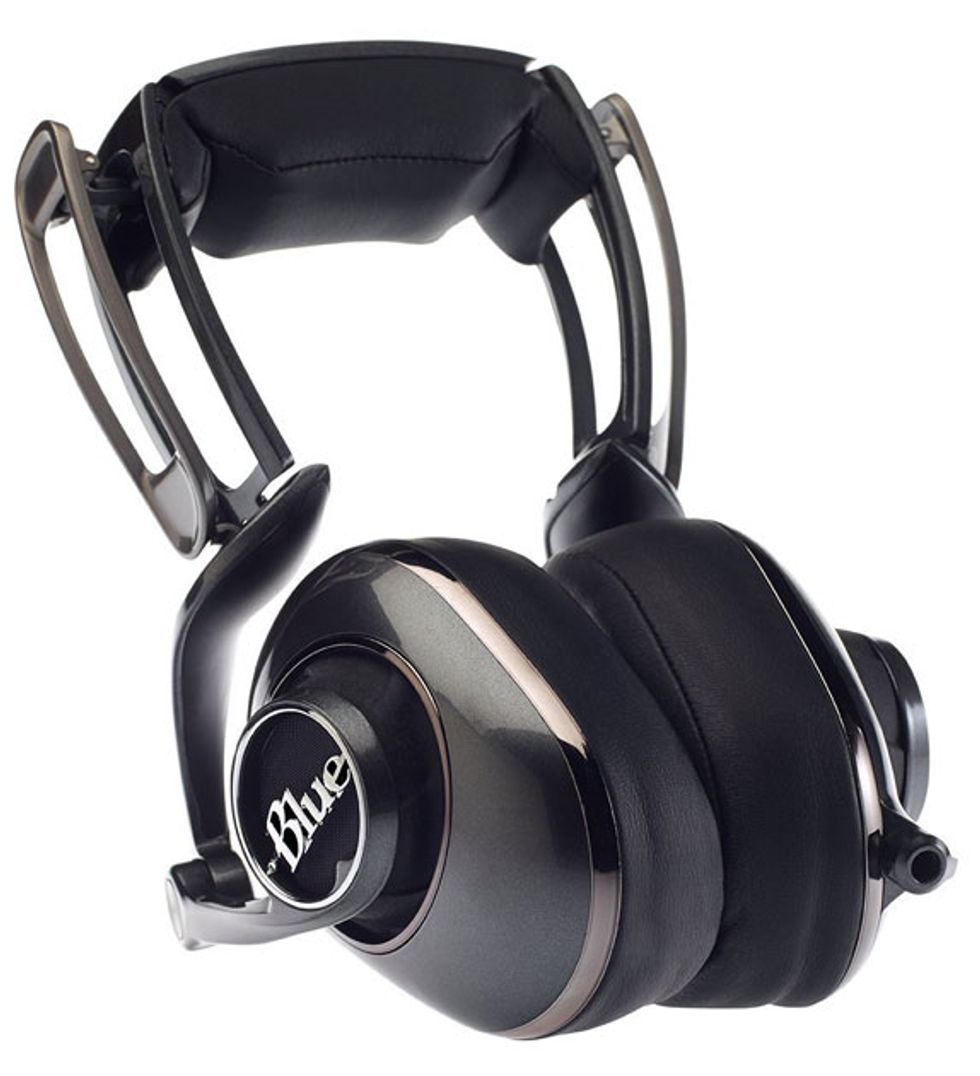
Blue Microphones Mo-Fi Powered Headphones
Best known for creating stylish, bang-for-the-buck microphones, Blue recently launched the Mo-Fi headphone line. Light, they ain’t—at 1.03 pounds, they’re nearly double the weight of, say, Beats Studios or Sony MDRs. That difference in heft is due to powerful built-in amps and drivers that purportedly provide the ample headroom and sound quality associated with external audiophile preamp units. The headphones power down automatically when not in use, extending battery life for the absent-minded. And when the juice does run out after 12 hours or so, you can recharge via USB. (No worries if you’re not near a power source—these cans also operate in battery-free passive mode, and there’s a bottom-whoopin’ enhanced bass mode, as well.) A multi-jointed headband design and cushy ear cups improve the odds of a comfy fit.$349 street
mofiheadphones.com
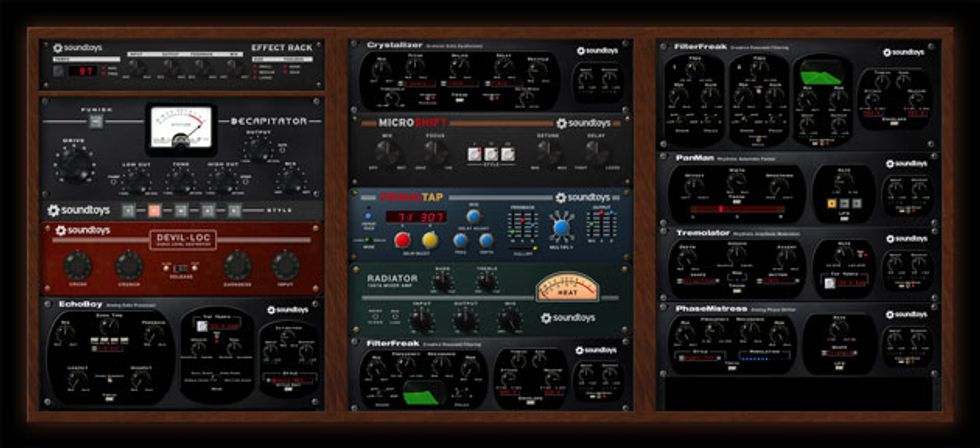
Soundtoys Soundtoys 5 Bundle
Do tone-warping digital stompboxes from Eventide, Strymon, and the like make you want to explore equally startling effects in the software realm? Soundtoys plug-ins may be your perfect port of call. Soundtoys’ superb delay, filtering, and modulation effects go far beyond the expected, often via superb pitch-shifting algorithms whose quality smokes that of many hardware units. Soundtoys UIs are a pleasure to work with, thanks to nested interfaces that put the commonest controls front and center, while letting you go “under the hood” for total tweakazoid manipulation as desired. Their guitar-friendly gain controls faithfully mimic analog preamps, allowing you to fine-tune effect response to suit your setup. Just try popping in a Soundtoys plug-in like Filter Freak or Crystallizer without encountering startling new sounds! The upcoming Soundtoys 5 will introduce Primal Tap (a new, retro-flavored delay plug-in) and a virtual effect rack. The latter will allow you to assemble any combination of Soundtoys effects in a single plug-in instance, and view them simultaneously in the same window. Soundtoys supports all leading plug-in formats for Mac and PC. Talk about dangerous toys!$TBA
soundtoys.com
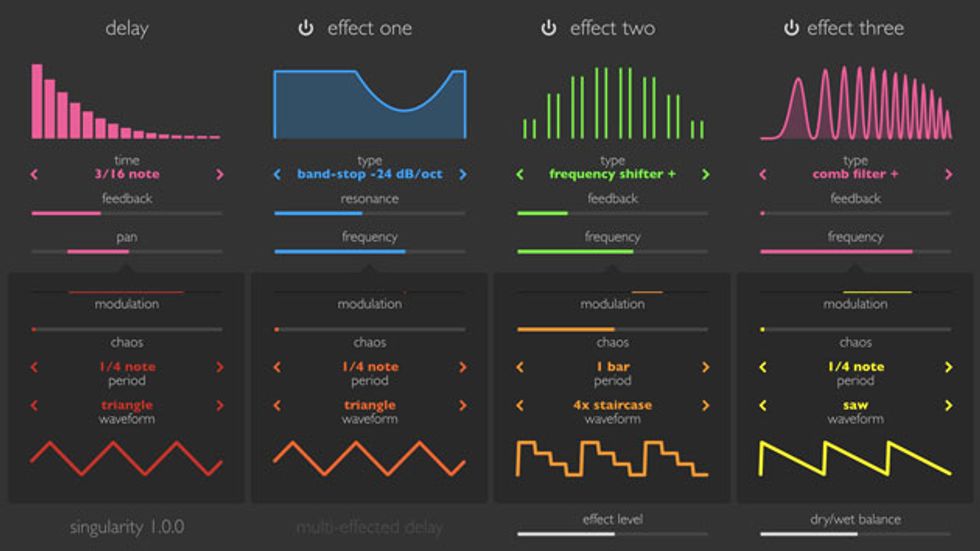
Sinevibes Singularity, Malfunction, and Molecule
Sinevibes is another great resource for guitarists who love breaking sound barriers. The European developer offers innovative yet budget-conscious Mac-only plug-ins, almost all of which sell for under $40. (Or you can by all 18 Sinevibes plug-ins for $269—a killer deal for tonal troublemakers.) Their latest creation, Singularity ($39), is an ambitious delay plug-in that lets you apply any three of 22 effect algorithms to your effect trails while tweaking them via four independent modulators. Other recent products include the circuit-bent noise bomb Malfunction ($19), and Molecule ($39), an ambitious multi-effector that divides your sound into three selectable frequency bands and lets you apply separate effects to each. These are powerful tools at puny prices—and the first whack is free: Visit the company’s website to snag a complimentary download of Atom, a cool, tempo-synched filter boasting dual modulators, many filter types, and a randomizing “chaos” function.sinevib.es



